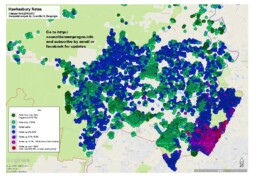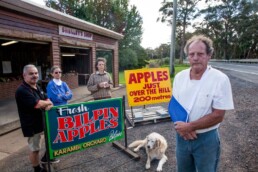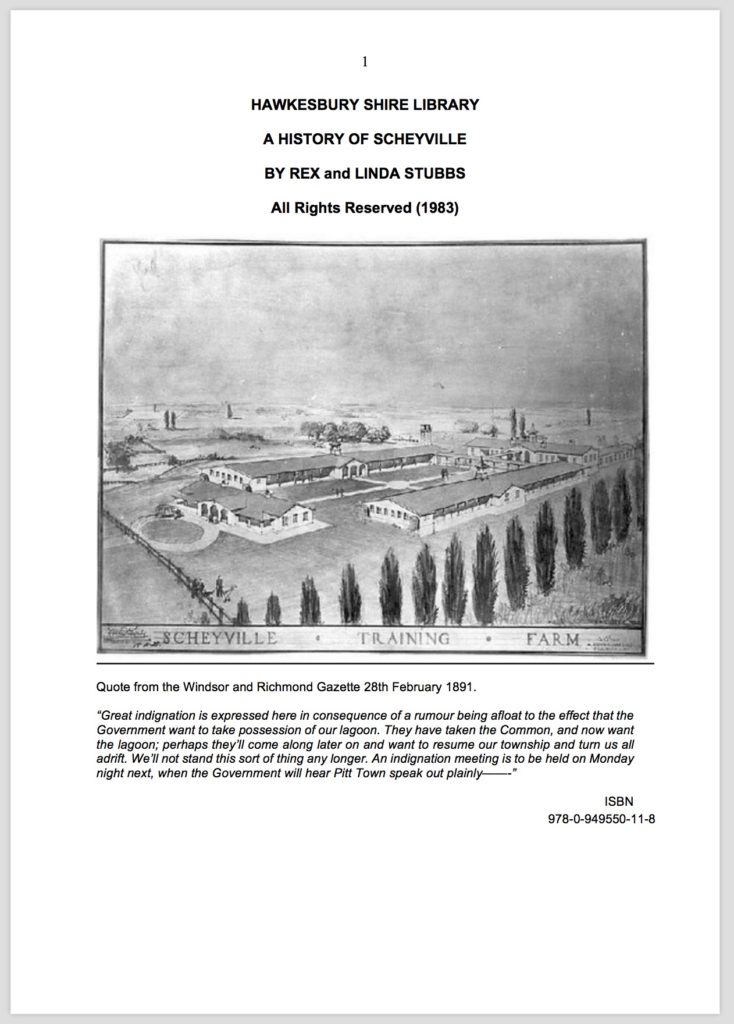Is Sydney Full?

"Significantly for the Coalition government, 61.7 per cent of Liberal supporters believe Sydney is full, 28 per cent are in favour of more development and 10.4 per cent are undecided."
To those who may remonstrate with me, my question is this: So when are we "done" with development? At what threshold, even in theory, would we say "this represents overdevelopment" in Sydney, when other cities in NSW are crying out for growth and investment? When, as the article bluntly poses the question, is Sydney "Full"? As a teacher, I've looked at this with my students, and I focused a unit of study on population around Dick Smith's excellent documentary The Population Puzzle. It's required viewing for anyone genuinely concerned about this issue.
As a local government representative, it concerns me that our ability to even contribute to that debate on your behalf is slowly being eroded by an increasing centralisation of planning controls, gravitating towards the Planning minister and panels of unelected bureaucrats. Many decisions that Councils used to make are being taken out of our hands. The reduction in local democracy is alarming.
Yet, my Liberal colleagues counter, this is because the decisions that many Councils make, including our own, are grossly inconsistent with the established planning guidelines. The substantial time and money invested by people seeking permission to do, legally, what they ought to be able to do with their land is subjected to the caprice and thought-bubbles of quixotic Councillors. Some of the decisions taken by our Council in the last year baffle me. Regretfully, the rank situation in Councils like Auburn, where developer Sam Mehajer brought the whole process of local government into disrepute, has caused all Councils, including our own, to be tarred with the same brush, and to be subjected to the same extreme corrective measures.
Again, both views represent facets of a larger truth.
Hawkesbury landowners get extended deadline for review of their land value
"In this episode, a climactic meeting with the Valuer General, plans to secede from the Hawkesbury, and a ray of hope for people who have endured massive rate rises, but only if you act now.
In my last video I described how thousands of Hawkesbury ratepayers have been hit with a big rise in their Council rates. I described how the 23% of our landowners whose rates have gone up, are now paying 35% of Council rates, and how that just isn’t fair.
I explained how the biggest part of that rise came from changes to land value as calculated by the Valuer General. An important development has occurred recently that you need to know about.
Hosted by Council, a representative from the Valuer General’s office came to a very well attended meeting at the Windsor Function Centre on August 30th.
Present were hundreds of angry ratepayers, stung by the rise in their rates, and who generally had not availed themselves of the opportunity to apply for a review of their excessive land valuation before the 60 day cutoff – the period that began after everyone received their valuations earlier this year.
At that meeting, the Valuer General made two concessions. The first is that Hawkesbury Residents have now had the deadline extended, and they can apply for a review of their land valuations until the end of September 2017.
If you live in the Hawkesbury and your rates have gone up, I strongly suggest that you apply to ask for a review of your land valuation.
The details of how to do that are at the link on the Valuer General’s website. My hope is that if enough people do this, some pressure can be brought to bear.
The second concession was that no landowner asking for a review in this round will have their land valuation put up. This is important because when you ask for a review, it could go down or up, and this makes the process of asking for a review a no-risk proposition.
However, unless you cite the right reasons, your application for a review may fail.
“I don’t like this” or “I’m on fixed income and can’t afford to pay” aren’t likely to get much traction, even if they’re true.
As I see it, there are three grounds for review, especially if you live in the Oakville, Maraylya, or Vineyard area.
The first is that real-estate values are being distorted by adjacent development caused by the North West Growth Sector.
Of course, one riposte may be that, even so, they are current the real-estate sales values, and that the Valuer General’s is merely applying their formula, and that’s that.
However, residents attending the meeting at Windsor were alarmed to find that only around ten sales in the area were used to define the values for the whole suburb, which is over 1200 properties in Oakville, Maraylya and Vineyard. This sample space is too small to be representative. Similar properties are grouped together into statistical units called Components. Nearby components separate to the Oakville component are cheaper, despite both containing acreage properties with similar aspects and uses. In my opinion, the Valuer General’s methodology is flawed.
My second concern is that land value should be reflective of what people can do with it. This instructive video from the Valuer General acknowledges that things like whether the land is sloped, or has an ocean view, has good soil, or is subdividable, all affect land value. Overwhelmingly, your land that has risen in value so sharply can only be put to the same use that it could be put a year ago, and no subdivision is in prospect. The Valuation of Land Act states that land must be valued according to its “highest and best permitted use”. But what happens when land is bought, at inflated prices, on the basis of speculation that it will be rezoned in the future for a different purpose?
The Valuer General should be prudent enough to mitigate against the effects of speculation in the market.
The third concern is that the Valuer General should acknowledge that changes as severe and rapid as this are socially and politically intolerable.
When you think about it, there is some precedent here. Look at what happened with the recent Fire and Emergency Services Levy.

You will recall this was introduced with great fanfare by the State Government in December 2015, only to be withdrawn in July this year, precisely because the government’s modelling was flawed. When it came out that the change in tax to many property-owners, based on land valuations from the Valuer General, were too steep, too unfair and too rapid, the whole program was put on hold.
Political intervention was justified there, and is here too, and for exactly the same reasons.
Your Liberal Councillors, including myself, have stood up for Hawkesbury residents on two fronts. To the degree that Council can affect change, we will continue to push for it, all the while continuing to bring these concerns before our State colleagues as well.
I’ll end by answering a remark I’ve heard at more than one community meeting. Ill-feeling is bad enough among some to suggest that parts of the Hawkesbury feeling this financial pain should secede from the Hawkesbury and apply to join the Hills Shire, or that the whole question of amalgamation between the Hawkesbury and the Hills be re-opened.
I’m not sure what you’d call that. Following the model of Brexit, should it be Hawkes-xit? Oaks-xit?
Frankly this is a nutty idea. Firstly, Hills Shire council never saw a development they didn’t like, and if you want the whole of the Hawkesbury to look like Rouse hill or Kellyville, then… please see your GP to change your medication.
Secondly, you would be no better off. The Hill’s rating structure is not so different to our own. To join the Hills Shire, where people may or may not eat their babies, would be at best a Faustian bargain that we would regret.
The Hawkesbury is a special place, and it deserves to stand on its own and determine its own destiny. I regard our corner of the world as a bulwark against the encroachment of what I call ant-hill Sydney. It is a valuable region of the greater Sydney area that is still most valuable for its amenity, open space, agriculture and heritage. If people can’t afford to live on acreage allotments because the rating structure is unfair, those on Council who have engineered this change might care to accept some of the blame when landowner’s thoughts turn to selling up to developers.
Video blog - Hawkesbury Council rate rises and the Valuer General
Further to an earlier post on Hawkesbury Council's rates rises, I've done some further analysis on the factors contributing to sharp rate rises for many Hawkesbury ratepayers, especially those in Oakville, Maraylya and Vineyard.
The maps referenced in the above video can also be downloaded here.

Remember, subscribe, like and share for updates!
An experiment in video engagement
I was elected nearly a year ago, and when people ask me how "the Council thing" is going, the answer I've tended to give is "I'm having more fun than at any time of my life!" That's not to say that I don't take the job seriously; I do. But I've genuinely relished the opportunity being a Councillor has offered to meet people, engage in debate, and meditate on those things that make communities thrive.
One of the things that I've noticed for years, and which people have confirmed, is that governments often struggle to engage with their citizenry effectively. That's not to say there's a lack of awareness of the need, or a lack of effort. But Councillors are used to voting on weighty matters that have been on public exhibition that attract few submissions, or attending community consultation sessions held in public venues around the district which, even if well attended, may only represent 1% of the broader electorate.
I asked our Council recently what proportion of ratepayer accounts were held on our database with a valid email address associated. The answer I got was that we have email details for only 11% of ratepayers, and mobile phone details for 26%. In contrast, the latest Census results show that 79.9% of people are connected to the Internet.
I believe it is incumbent on elected representatives to use new technologies to engage people, and I'm doing something about this.
Thus, I am pleased to announce a semi-regular video series, which will be complimentary to this website. My aim is not to become the next viral YouTube megastar (although that would be nice), but to reach parts of our citizen population that are not currently being reached -- with the consequence that cynicism about government is at an all time high.
However this experiment will only work if these efforts find an audience, and reach the critical mass needed for other elected representatives to realise that the Internet is where many people gain their information about the world around them -- especially Milennials, or working professionals with little time to attend evening meetings.
If you think this kind of thing is worth supporting, then please let me suggest that you subscribe, like and share.
-Clr. Zamprogno.
Are some Hawkesbury residents paying too much tax?

The hot-button issue this month is that rate notices arriving in the letterboxes of many Hawkesbury ratepayers show that their rates have risen sharply, while other suburbs have had a modest decrease. And by "risen sharply", I mean doubled or tripled from this time last year. The worst example I found was a property at Pitt Town now paying over six times the rate of an average property compared to last year.
Most residents accept that paying tax (in this case, Council rates) is necessary to provide the services people expect. However, many community consultation meetings (and last Tuesday's Council meeting) were full of ratepayers who are visibly angry at what they feel is a betrayal of the principle everyone pitching in equally; the Aussie notion of a "fair go".
So are some people now bearing a disproportionate burden of Council rates? I and my fellow Liberal Councillors think some are, and we've tried to do something about it.
What's happened is a triple-whammy of changes and proposed changes, and it's been challenging to educate the public about the contribution of each part.
Here's how to understand what's happened.
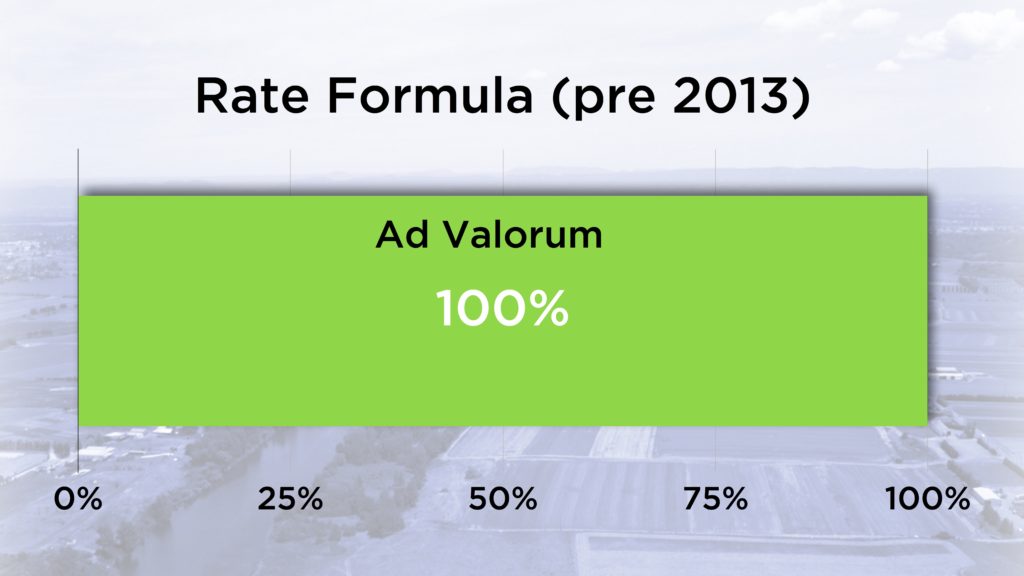
Prior to 2013, your Council rates were calculated entirely on your land value. This is called the "Ad Valorum" approach (Latin for "according to the value"). This of course meant that if your land value rose sharply, your rates reflected that rise very directly.
The Liberal-lead Council instituted a change in 2013 that introduced what's called a "Base Rate" of 50%, meaning that there was a standard charge paid by everyone, and that the remainder of rates Council collected based on land value was also 50%.

The Liberal Council regarded that as a reasonable and democratic change to make, and it resulted in an "evening out" of rates paid by both residential and rural-residential landowners. Rural-residential properties frequently are situated further from common resources in the towns, and endure worse roads, a lack of kerb and guttering, poorer street-lighting, and other disadvantages. Of course, the 2013 change resulted in some rates rising and some falling, but the changes were calculated to be moderate, and not extreme, unlike the most recent changes.
In September 2016, a majority of the Councillors elected to Hawkesbury Council were Independents, Labor and Green. The four Liberal Councillors are now outvoted by the 8 Councillors in this decidedly left-wing alliance.
This year, the new Council decided to change the formula again and reduce the base rate to 30%, and consideration is being given to a Special Rate Variation (SRV) that will put everyone's rates up by more-than-rate-pegging if the proposals currently before us are endorsed by the Council and then by IPART.

Your Liberal Councillors voted against this change. The reduction of the Base Rate to only 30% means that people experiencing a spike in land value are more heavily hit.
It is not the purpose of this article to argue the case for or against the SRV, as that is more complicated.
Enter, the Valuer General. Land values in a range of suburbs across the district have changed sharply in the most recent round of valuations (which generally occur once every four years).
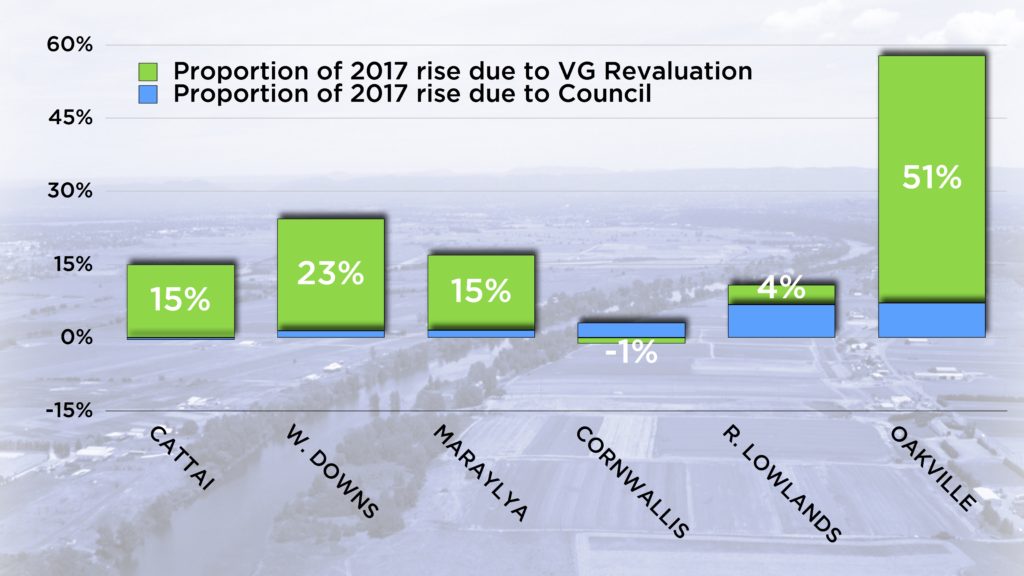
The area in which I live, in Oakville, has been particularly hard hit, with the average rate rise of 57%, and with some property owners very much harder hit than that.
Frankly, the Valuer General has erred in valuing the land in Oakville in the way that it has. It has erred because land value should reflect the prospective "subdividability" (if I might coin a word) of land, and of course there is no prospect of landowners in Oakville being able to subdivide their land at all in the near future. The land valuations are calculated on recent real-estate sales figures, and this isn't the same thing. Very heavy development is occurring on the other side of Boundary Road in the Hills LGA, and this has artificially skewed the figures in a highly disadvantageous way to Hawkesbury residents whose income has not risen magically to keep pace with their land value. I am heartened to hear that the Valuer General will be visiting the Hawkesbury to meet with residents and my hope is that they will be willing to revisit their valuation processes instead of simply coming with the attitude of only explaining but not changing their conclusions.
At the Council meeting on Tuesday 8th August, the gallery was packed with residents supporting a Liberal resolution to re-visit the rating formula and to apply pressure to the Valuer General to explain their decision. This motion was opposed by Mayor Lyons-Buckett and the independent-Labor-Green alliance and substituted with a significantly watered down motion that effectively called for no action to be taken on the base rate.
This was disappointing, and rural-residential landowners badly affected by both the change in formula and the Valuer General's decision will continue to be hardest hit.
I and your Liberal Council representatives will continue to listen and represent your concerns, right up to the next Council elections.
-Councillor Zamprogno.
Commemorating the 1867 Hawkesbury Flood
To help commemorate the upcoming 150th anniversary of the tragic, yet fascinating events of the 1867 flood, I recently took The Hawkesbury Gazette journalist Justine Doherty on a brief tour of the flood exhibit at the Hawkesbury Museum.
I talk about flood history in the Hawkesbury, a subject dear to my heart as I am the direct descendant of a third-fleet victim of the Windsor flood of 1809 (William Kentwell), and I remind everyone that they should come to Thompson Square on the evening of Friday 23rd June to join the official commemorations.
The Gazette's story is which I appear is here.
(Non)-Recycling at the Hawkesbury Show
Last weekend was the annual Hawkesbury Show, and what a success it was! Fine weather, well-attended, and a buzzing community vibe as local businesses and exhibitors showed off what's great about the Hawkesbury District.
Also pleasing was the presence of the Hawkesbury Council tent, where we engaged with the community and educated people about the services we deliver and the role Local Government plays in your lives. I am informed that the attendance at the tent was an all-time record of 7164, which is 52% bigger than last year. Our staff should be commended for their enthusiasm and their stamina across the three days of the show.

I noted one particular focus for Council was to encourage showgoers to be good recyclers during the show, with these fliers being distributed:

This sentiment seemed to be backed by the presence of paired bins around the show ground to enable people to do the right thing:
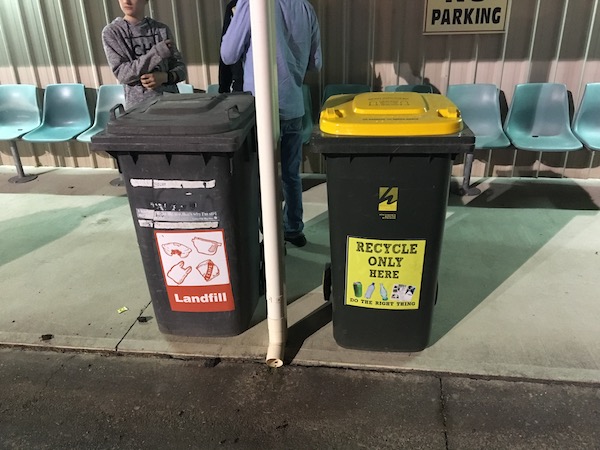
Council had waste education officers in the Council tent, consultants performing surveys about recycling, and bin inspectors going around and looking at bin contents.
Your correspondent is so tragic that even I was going around and taking photos of the insides of the recycle bins to see how well people were taking to the message about recycling by putting the right rubbish in the right bin.
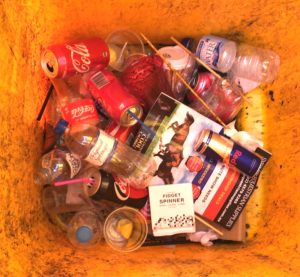
Generally, people were heeding the message. This is pleasing.
However, my warm and fuzzy environmentalist thoughts came to a jarring halt when I learned what happened to the collected rubbish. Rural Fire Service volunteers were given the gig to collect bins during the show, in exchange for a donation to the RFS, which is a win-win for the community. And I must say, they did a good job. The showground always looked spic-and-span.
Then, one volunteer drew my attention to the single compactor Council had provided for all the bin-waste at the show. I witnessed the RFS volunteers enthusiastically emptying both types of bins into the one hole, to be sent straight to landfill. We weren't recycling at all! This meant that all the good work that was being put into education and in having paired bins was (excuse the pun), wasted!

Frankly, I was surprised that no one else had raised this, and I immediately made inquiries through Council staff to see what went wrong. My fears were confirmed.
This is a disappointing result. However, there's no recrimination here; only lessons to be learned. We need to plan better to give effect to community expectations about recycling at large events. I have been assured that the post-event debriefing will allow us to learn how to do better at next year's show.
ANZAC Day: A Commemoration, not a Circus
Today, on ANZAC Day, I present an article I originally wrote back in 2008 about my own very personal pilgrimage to Gallipoli, and my quest to seek out a very particular grave at Lone Pine.
During my adventure, I was arrested by the Turkish Army, held at gunpoint and accused of being a spy. If you want a ripping yarn, ask me some time...

Seeing our TV Screens full of Australasian backpackers flooding onto the Gallipoli peninsula is an ineluctable and annual staple. “Good on them”, we think. The commemoration of that singular event in our history which gave birth to our national identity is carried to a new generation by young people picking up the mantle saying “Lest we forget”. If we look a little closer, we note that those making the pilgrimage to the sacred site don’t always pick up their rubbish, some look a little worse for wear, and sometimes the gravity of the occasion has been lost a little. Most have made an overnight coach trip from Istanbul, which is nearly 300km away, stay to see a compressed guided tour of the ANZAC precinct, and head back the same day. Those seeking the historical flavour might sit through The Gallipoli movie with their package tour group the night before the trip. Few, if any, actually make it to the town called Gallipoli (Gelibolu, to the locals), which is some distance from ANZAC Cove.
Every year I see those pilgrims, I’m filled with pride that so many people continue to be motivated to travel to what’s still quite a remote spot to stand with other Aussies and Kiwis and blow on the coals of remembrance. My own son has a Gallipoli veteran as an ancestor, on his mother's side. Every Australasian should make this trip at some point in their life.
But I’m also filled with a lot of sadness, because they’re robbing themselves of the best and most moving ANZAC experiences. Let me share my Gallipoli story…
I was fortunate enough to travel to Turkey a few years ago. Making my way from Ankara, 750km away, and with no fine command of Turkish, all I decided to do was keep saying “Gelibolu” at bus depots and sea ports and then go in the direction people were pointing. For simplicity, my plan was a 10 out of 10. For accuracy, as my five-year-old says: “minus zero”. Not that it mattered. I was mesmerised. Every waypoint was a palimpsest of history. Getting lost was a pleasure. Beneath the modern city of Istanbul lay the Ottoman’s den. Beneath that, the Roman city of Constantine. Beneath that, the Greek’s Byzantium, and beneath that, a Phoenician Seaport. As I was crossing the Dardanelles by boat, I was dreaming of those young, brave souls from country NSW or outback Queensland, about to set foot into hell. But I could have as easily dreamed I was Paris of Troy, or Alexander the Great, or Xerxes, or the Apostle Paul, all of whom made the same journey over the same stretch of water.
Unfortunately, my geography wasn’t quite as good as my history. Shortly after my triumphant arrival in the actual town of Gallipoli was the news that, sorry, Gallipoli isn’t actually anywhere near, well, Gallipoli. Only a minority of ANZAC pilgrims end up there, although there must have been enough; the local lodgings were called “ANZAC House”. Ah, ANZAC House… where the toilet (right next to my bed, and whose interior surface was black with exotic encrustations), ran all night, while the showers wouldn’t. Long story…
Now those that know me well will expect me at this juncture to tell my How I Got Arrested By the Turkish Army Story and Held at Gunpoint story, and perhaps I will… another time. I want to make a different point.
You see, all those well meaning pilgrims attending the ANZAC Day dawn service are missing out on an enormous part of the Gallipoli experience. It’s like going to the Louvre and staying half an hour… it’s just not on. Certainly, there is a unique feel to being there with so many other people, but my own experience was far more moving because of how I found myself there. Here’s what happened.
I wasn’t travelling in the area at ANZAC time. It was early April, weeks out from ANZAC Day. My poor navigation landed me in a fishing village bearing the name of my destination but unfortunately not the co-ordinates. There's something charming about being an accidental tourist, and I got to see somewhere that a lot of people don’t, even those who come back saying “I’ve been to Gallipoli”.
Fortunately, as a result of losing myself, I was approached by a charming local man, Gurkay, who negotiated a price to drive me down the peninsula in an ancient Combi and show me personally all the sites I wanted to see, such as the Gallipoli museum, Lone Pine, ANZAC Cove, and all the various monuments one would expect; a trip which would last a long day. I had my own personal guide! He thought he was rorting me blind for AU$100, and I thought I was getting a bargain. He had a little English and I had only a little Turkish (limited to the phrases for “I love you, my darling”, “get well soon”, or “thank you”… again, long story). We were firm friends by the end of the day.
Further, I had a mission. A dear family friend in his nineties had heard I was going to Gallipoli. He explained that his older brother, Stan, had died at Lone Pine and that in all the years since, he had never seen as much as a photo of his brother's grave. Wow. Challenge accepted!

When I made it to ANZAC Cove and Lone Pine; when I walked the partially reconstructed trenches, and when I went bush-bashing a bit just to see what it felt like to climb a hillside in Gallipoli with no railing or path, I was able to think in silence, by myself. I think I sat there and thought for a long time. A really long time. It was a sunny, breezy day, and birds were chirping, but I think that only by sitting there quietly for half an hour allowed me to hear the faint echoes of the fallen, and what they were trying to say to me.
When I found the grave I was looking for, the depersonalising effect of contemplating the mute and serried dead was all washed away. Courtesy of the Commonwealth War Graves Commission Website, I had located one of nearly a hundred thousand graves. Yet, this one was special. I arranged it with an Australian flag I had brought for the purpose, took photos and video of the area, and yes, I cried. I cried for a man who had not had a single soul to cry by his grave in 84 years.
If you’re contemplating a trip to Gallipoli, don’t settle for the prepackaged “back to the bus in 15 minutes”, shrink-wrapped, cattle-class version. See it properly. See it with time to sit quietly and contemplatively somewhere, by yourself. If it’s just an item on your itinerary and someone is holding your hand the whole way, then it isn’t a pilgrimage- it’s just a trip.
(Click here for the full Flickr set of photos associated with this story- my Gallipoli photos.)
Bilpin businesses need help from Council, not fines
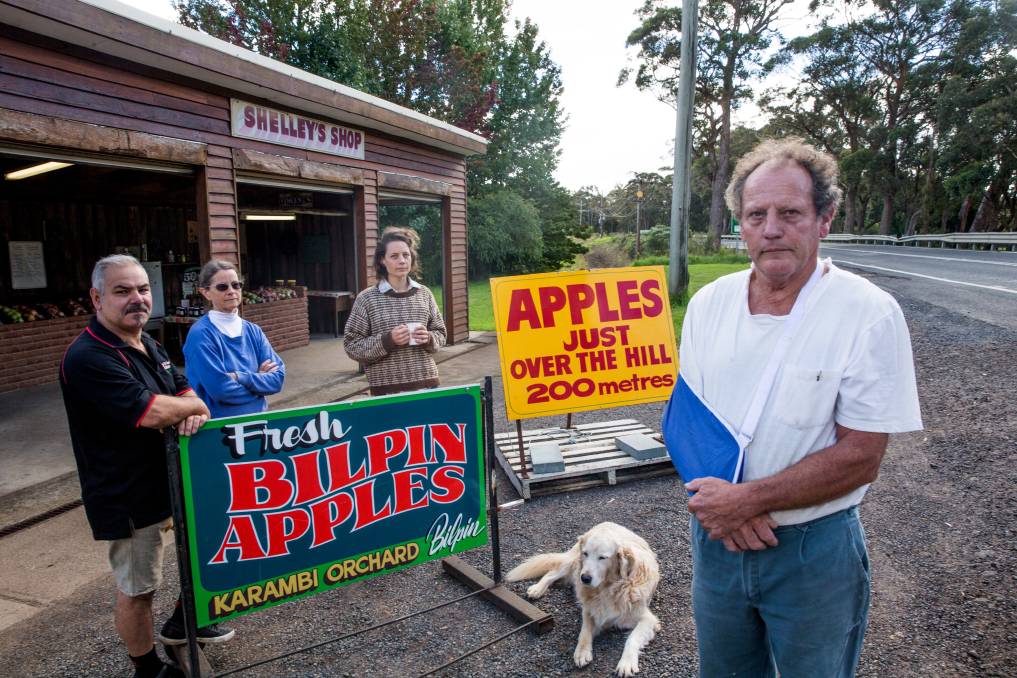
Sean Prendergast, founder of Bilpin Cider, is on the phone with me, and he's livid.
"$6000! Council fined me $6000 for having a sign on a trailer outside my business!"
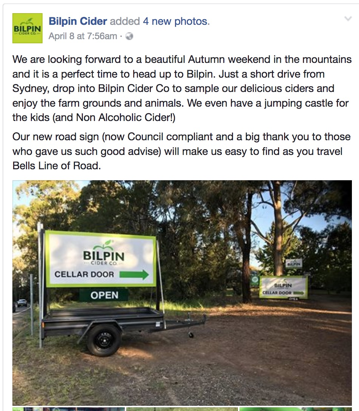
My ancestors were orchardists for over a century, at Glenhaven, and so I'm immediately sympathetic.
What's worse, he tells me, is that in previous interactions with Council, he had formed the view that his current signage was compliant, after an earlier shot across the bow relating to "approach signage", meaning signage placed along Bells Line of Road to let drivers know about approaching businesses and giving them the opportunity to slow down.
As it happens, I had already been speaking to Wayne Tapping, of Wildwood Gardens, His situation is worse, as his venue and café is on Powells Rd, just off Bells Line. "Without signage on the corner to let people know where we are, our business drops by more than half" says Wayne.
And what did Council do with his A-frame signs? They impounded them at Wilberforce, and told him that if he picked them up before 5pm, they would waive the $213-per-sign fine.
Knowing this, the story that appeared in the Gazette two days ago, Orchardists Reel as signs prohibited - rules cruel Bilpin orchards and food outlets, is entirely unsurprising, and something needs to be done about it.
The problem is that the rules governing signage in our city are too inflexible. No one wants ugly signage in our already built-up areas, and the rules are there for good reasons. That said, some strange things still slip through. The Windsor Holden building in Macquarie St Windsor is a monstrosity, but I shall move on...
But businesses in Bilpin need every support they can get from Council, not $6000 fines. Under the current rules, they aren't even permitted A-Frames (which require a form to be lodged and a $119 fee), because such signs are limited to business and industrial zones. The farm sheds most orchardists sell from are not considered business areas and are zoned "Rural". Even signs on their own properties can't be bigger than 0.75m², and higher than 2.5m above the ground. Good luck seeing that, barrelling along Bells Line at over 80km/h. Worse, our current LEP doesn't permit approach signage at all. I'm sympathetic to the argument that approach signage improves road safety by giving potential customers time to make a choice, slow down, and look for the business coming up. So it's clear that rules that work well in other places, are not working well in Bilpin.
Council's current response is to suggest that Bilpin business make better use of Social media. This is more than a little dismissive, and it isn't good enough. As the Gazette article points out, the number of orchardists in Bilpin has dropped from over eighty in the 1980s to ten today, and all of them rely on direct sales to some degree. The orchards in Bilpin are a key part of the agricultural, social and tourist fabric of the Hawkesbury. We shouldn't let them die.
When asked by the Gazette, Council says that "If business operators request that Council look into a signage policy, then Council can look into developing a signage policy for businesses around Bilpin area to provide more guidance. Until such times the current policies remain in force."
I think we need to go beyond this. I want Council to take the initiative and develop a signage policy for Bilpin that balances the needs of those local businesses, draws the tourist trade, and yet is mindful of road safety and the aesthetic of our rural landscapes. Compliance to local ordinances and planning rules is important, but Bilpin businesspeople need our help. People like Neville Julian, and Shelley Julian, and Sam Ramaci, and Sean Prendergast, and Wayne Tapping, and many others would be entitled to think that, on current form, they aren't getting it.
I have reached out to my Councillor colleagues on this matter and so far I have received a very positive response. Stay tuned.
Consistent inconsistency from Council regarding development
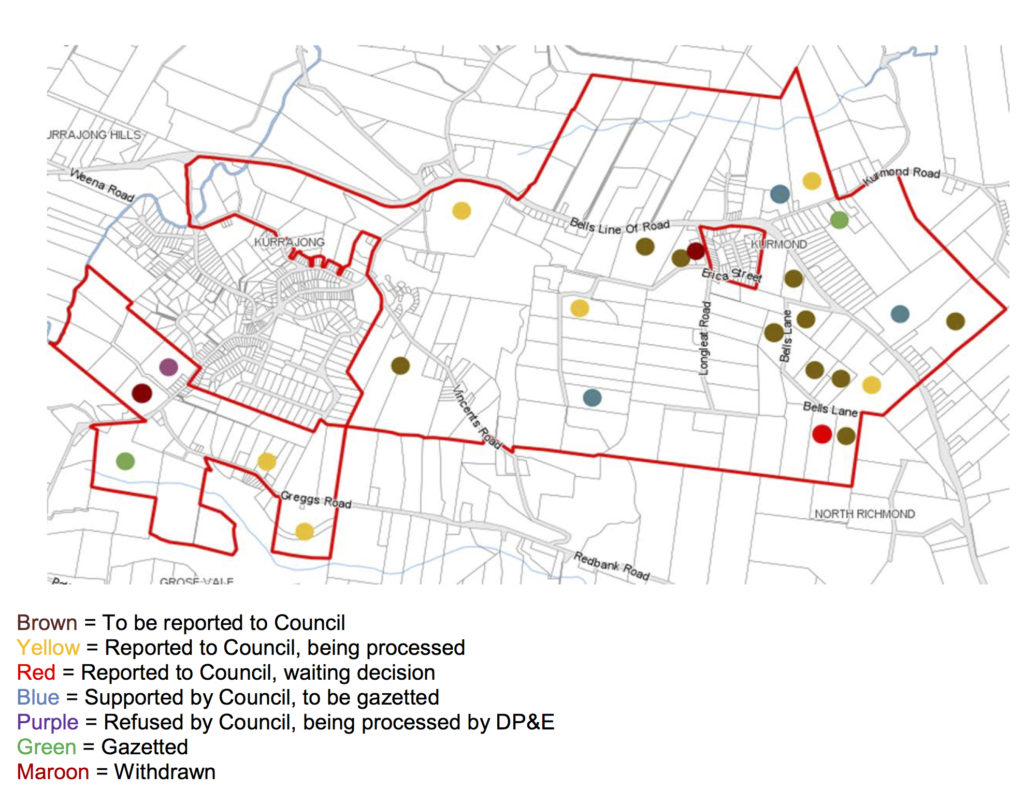
Today, the Liberal Hawkesbury Councillors issued a media statement to express their concern about the current Council’s inconsistent attitude to development in the Hawkesbury. This post is intended to provide more information on our position.
On the 29th of November last year, Council voted to receive a report into the “Kurmond and Kurrajong Investigation Area Survey”. The matter was on the agenda in the last days of the previous term, but they punted it to us to allow the new Council to consider the report and take whatever action we saw as necessary.
This report sought to inform Council of the clear wishes of the residents of Kurrajong and Kurmond concerning the scale and form of development that they preferred. The summary of the report declared:
“Overall, the results of the survey showed that there was more interest in large lot residential/rural- residential development throughout the Investigation Area than for further residential development, particularly within the existing villages of Kurmond and Kurrajong. There is some support for large lot residential/rural-residential development and residential development immediately surrounding the village of Kurrajong and large lot residential/rural-residential development and residential development immediately surrounding the village of Kurmond”
The results were clearly tabulated, looking (in part) like this: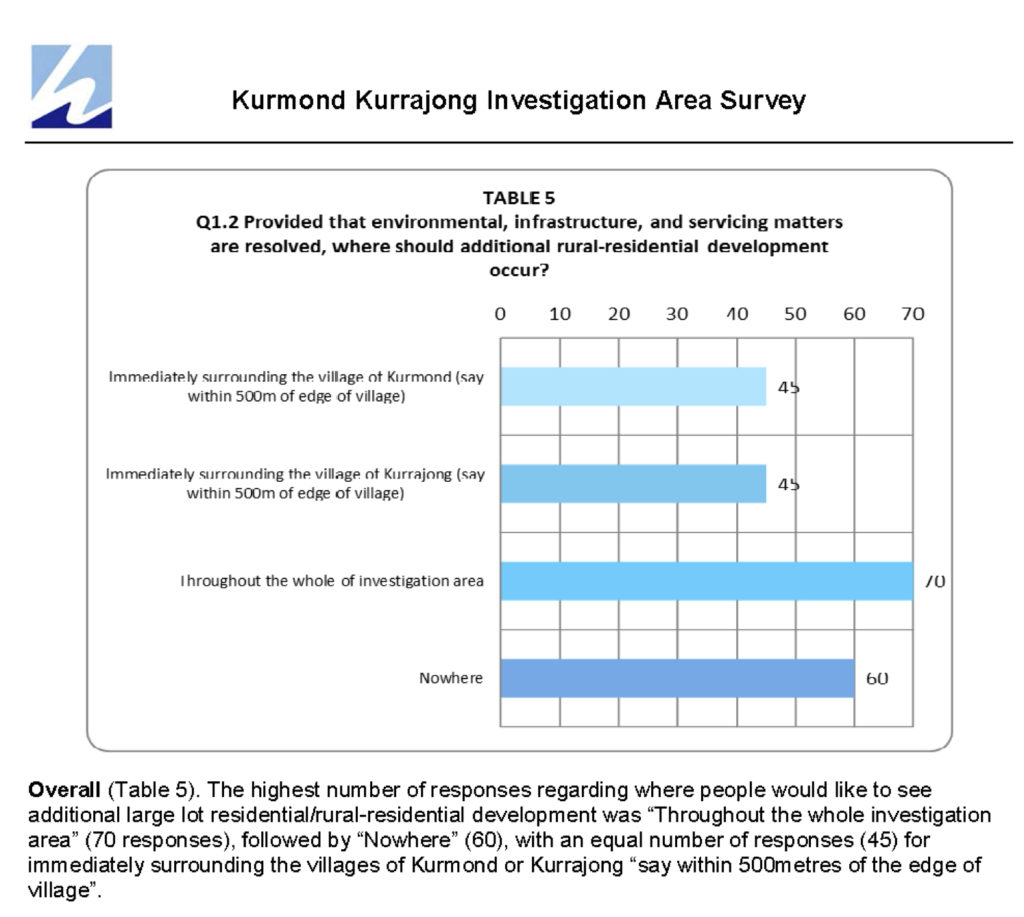
The recommendation that came to Council from staff said
- Council receive the results of the Kurmond and Kurrajong Investigation Area Survey.
- Council Staff identify a number of specific areas (based upon Constraints Mapping, survey results and the preferred approach as outlined in this report) for possible development of additional large lot residential/rural-residential development throughout the Investigation Area and some residential development up to, but not within, the existing villages of Kurmond and Kurrajong.
- The identified areas be further consulted with the community regarding future development.
- The results of that further consultation be reported to Council."
At the prompting of Labor councillor Amanda Kotlash and Greens Councillor Danielle Wheeler, the following two items were added to the motion:
5. Council not accept any further planning proposal applications within the Kurmond and Kurrajong investigation area until such time as the structure planning as outlined in this report is completed. Council receive a progress report on the structure planning prior to July 2017.
<
p style="padding-left: 60px;">6. Council continue processing the planning proposals within the investigation area that have received support via a Council resolution to proceed to a Gateway determination and any planning proposals currently lodged with Council as at 29 November 2016.
Mayor Lyons-Buckett recused herself as her own home is in the investigation area, and the motion was passed 10:1, with Clr. Rasmussen the only dissenter.
During the debate, it was clear that there were several reasons why the motion could be supported in a broad and bipartisan fashion.
The first reason was because there was an acknowledgement of the broad purpose of the Investigation Area process. The initiating Mayoral Minute in February 2015 identified the need for “Implementation planning for the Hawkesbury Residential Land Strategy (RLS)”, and “the need to undertake structure planning and development contribution planning for development areas.”
My worthy colleagues on Council frequently cite an epidemic of ad-hoc development as the reason for slamming on the brakes, as though the Hawkesbury is sleepwalking into a Rouse-Hill style densification without a broader appreciation of the physical and social infrastructure required to make those communities accessible, sustainable and in keeping with the semi-rural qualities we value highly in the Hawkesbury.
I'm on the record myself as being uncomfortable about the pace of residential development in the LGA, but the key difference is that I respect the need for the proper planning processes to establish what should and shouldn't happen in various parts of our city.
The motion that the Green and independents willingly sponsored acknowledged just this: That this was a well-conceived process of asking the residents of Kurrajong and Kurmond what they wanted, and then proceeding to identify the large-scale and long-term resource allocation and planning work that would need to be done, and then reporting back to Council.
The proof that this was the case is in the brief that was given to Council staff. They were to formulate:
- What land may be suitable for large lot residential / rural residential development
- What land may need to be protected or conserved (e.g. land containing threatened species or endangered ecological communities, riparian areas, land with significant slope, significant view lines)
- The nature and location of future development (e.g. the type of residential development and minimum lot size requirements)
- Likely development yield and take up rate
- The extent of rural village expansion and limits to growth
- The nature and location supporting public infrastructure (e.g. roads, intersections, drainage infrastructure, community facilities, parks and recreation facilities)
- Mechanisms to fund and provide supporting public infrastructure.
And they gained concurrence from local residents that the planning principles that should be adhered to should prioritise:
- Essential services under the Hawkesbury Local Environmental Plan 2012 and fundamental development constraints are resolved.
- Building envelopes, asset protection zones (APZs), driveways and roads are located on land with a slope less than 15%.
- Removal of significant vegetation is avoided.
- Fragmentation of significant vegetation is minimised.
- Building envelopes, APZs, driveways and roads (not including roads for the purposes of crossing watercourse) are located outside of riparian corridors.
- Road and other crossings of watercourses is minimised.
- Fragmentation of riparian areas is minimised.
- Removal of dams containing significant aquatic habitat is avoided."
These are precisely the issues that the green-independent Councillors are obstructive over now, so of course it made sense in November for them, and us (the Liberal Councillors) to support this process.
However, the second reason that the motion drew broad support was, crucially, that it granted procedural fairness to applicants who had begun, and in many cases, were well along in the process of submitting planning proposals or development applications that were consonant with the kind of development that the report identified as desirable by the communities of Kurrajong and Kurmond! Look at point six: Any application lodged before the 29th of November and which had earlier been supported by a Council resolution, or anything lodged in the system before that date would “continue to be processed”. This meant that the Greens, the Mayor, the independents – all of us that voted for the motion, accepted that the only fair and consistent policy to enact would be to continue to see existing applications move through Council, and proceed to Gateway Assessment (the “higher up” review of planning proposals by the NSW Department of Planning, who are also cognisant of the “bigger picture” issues relating to roads, utilities and sustainability).
It was regarded as fair that, seeing as the clear preference of the new Council was to disfavour development west of the river, that new applications be put on hold. And it was equally understood as fair that procedural fairness be granted to planning proposals “in the pipeline”, not that there were even very many of them (see map at the header of this post). Many families with larger acreage holdings had entered into the expensive process of seeking approval for large lot subdivisions (~4000m²) in good faith. Council is entitled to indicate a new direction for new applications, but it is not entitled to cut off applications already in the system at the knees.
Sadly, this agreement has not been honoured, and the Green and Green-aligned Councillors have reneged on the processes that they themselves seconded and supported in the Chamber.
Since the 29th of November, a number of extant planning proposals that met the criteria of the Kurmond/ Kurrajong Investigation Area have come to Council and been repeatedly knocked back for reasons unrelated to their individual merit, demonstrating a complete inconsistency with Council’s resolved position in November. I and my fellow Liberals have remonstrated with the Greens and Independents, and I might say, have frequently been supported by the Labor Councillors Amanda Kotlash and Deputy Mayor Barry Calvert. In this new Council, on this matter, the “establishment parties” represent professionalism and respect for process, and the green-independent Councillors represent stumbling, amateur opportunism.
One Councillor disputed factual assertions by Council staff, claiming his half hour of Googling on the question of the capacity of waste water recycling systems trumped the considered data put forward in the business paper. As a result, one applicant will have to install a second water treatment system for a single residence that currently has an occupancy of four. Cost: many thousands of dollars. Another Councillor barely manages to stay awake, punctuated by repetitive and irrelevant lines of questioning. Another Councillor admits their ideological “never, ever” predisposition to evaluating all proposals, and in seeming disregard of any evidence put forward. This isn't government by the deliberative consideration of the evidence. This is government by ingrained bias and thought-bubble.
Now I hasten to say that I enjoy the fraternity of my Councillor colleagues, and also with Council staff. We get genuinely along, despite our differences of opinion, and I value that we generally treat each other with respect. However, we’re not there to agree on everything, and if I think our community is ill-served by this kind of inconsistency, I’ll call it out.
Today, our Mayor has tried to refute the idea that the Council is opposed to “any development west of the river”. In support, she states that 74 DA’s were approved by Council in the last month, with 45 of them west of the river, and 29 east of the river. This is a little disingenuous, considering a DA can be anything from a shed to a building extension, and that most of these DA’s were approved by staff under delegated authority.
A better measure is to look at the growing list of inconsistent decisions that would otherwise have been covered by Council’s resolution of 29 November.
On the 29th November 2016, Council considered a planning proposal for 431 and 431a Greggs Lane, Kurrajong. It was an 8 lot subdivision, each lot being no smaller than 4000m². It fell within the investigation area that Council had only moments earlier voted to continue to process extant applications for. Yet Council voted to defer. Then, on the 13th December they voted to approve, and again on the 11th April 2017, voted to continue the process.
Fine, so far. Their attention span held. But look what’s happened since:
31st January: 42 Bells Lane, Kurmond. 4 lot subdivision. Voted down.
31st January: 98 Bells Lane Kurmond, voted down.
14th February: 42 Bells Lane Kurmond (via Rescission motion). Defeated again.
11th April 2017: 631 Bells Line of Road, Kurmond: Voted to defer.
What was different between the Greggs Lane application and the others? Nothing. Applicant after applicant (frequently families dealing with the desire to secure retirement security, give their kids a leg-up, or dealing with deceased estates) leave the chamber shaking their heads, wondering why their application failed when similar ones were approved, and wondering why precisely none of the debate in the chamber came even close to arguing the actual merits of their proposal. Instead, they were knocked back over a general worry over "traffic", or waiting until the results of a traffic study come in that has nothing to do with their application. It's a bad signal to send to people wanting to invest in our area.
Further, what the residents of Kurrajong and Kurmond are entitled to find galling is that Council have already engaged in the process of asking you what you actually want in the area, and that the answer seems clear. Your preference is for Rural-Residential development (as opposed to Residential smaller-lot development), and the preference is for that development to be generally contigious or near the existing village centres. Despite being generally leery of development, that's something that even I can support, especially when it follows extensive community consultation.
It is disappointing to see your other elected representatives claiming that they know your minds better than you do.
About the Grose River bridge and the Redbank development

Today, I’m writing about the proposed bridge across the Grose River that forms part of the deal struck when the Redbank development was approved at North Richmond.
First, I’ll repeat something I’ve said before: If I had been on Council when the Redbank development at North Richmond was put up, I wouldn’t have voted for it. It worsens the congestion at North Richmond and across its bridge. The scale of the development was not compatible with the area, and the rural landscape created by the keyline dams scattered across the Peel property were better preserved as open space.
However, my current Liberal colleagues on Council are correct when they say that there was one thing that made Redbank compelling, and that was the provision of a new bridge across the Grose River, entirely at the developer’s expense.
I want to dispel some misunderstandings about where things are at. Councillors received a briefing on this matter just a few days ago. Our deliberations should always be led by the official reports that come to us in the lead up to a vote, but there’s incorrect information circulating in the community and the need for other tiers of government to be equally engaged with us makes this commentary worthwhile.
The Redbank developer signed what’s called a “Voluntary Planning Agreement” (a VPA) in August 2014. The VPA can be accessed here. The co-signatories were Hawkesbury Council and the RMS. The most significant obligation this VPA conferred was the provision of a “Multispan bridge, approach roads and intersections for crossing at Yarramundi of Grose River”, which would have to be approved by the time the 341st lot was sold. This threshold will be met by about March 2018, based on the current rate of lot sales.
The developer has taken out large advertisements in local papers declaring this approval is “stuck” in Council and “may take years to resolve”.

This simply isn’t true. The developer was given a choice about the mechanism by which the approval process for the bridge could proceed. They were advised about what would be required at a meeting in July 2015. They lodged a D.A. in April 2016, and then nominated to have the mechanism changed to what’s called a “Part 5” process only in August 2016. This was exhibited until September 2016 and is ongoing. There are a couple of documents outstanding, including a Crown Lands Merit Assessment. The necessary document for Approval to be considered by Council will be a revised Plan of Management, which could be available by late 2017 or early 2018 – in time for the lot threshold defined by the VPA.
It’s worth noting that this VPA also included a lot of other benefits to the community that have already been delivered, such as $2.5M to upgrade Bells Line of Road, Grose Vale Rd, the Terrace, Old Kurrajong Rd, Yarramundi Lane, Bosworth St and March St. It will also deliver 15 bus-shelters, concrete paths in Peel park, $1.35M to upgrade North Richmond Community Centre, the dedication of land with utilities for a future Child Care centre, and maintenance of all open space for five years prior to dedication of the land to Council into perpetuity. Not a bad outcome!
The developer now says that they would prefer to see a sum of $24M given over to “Council and RMS” to build the bridge themselves. But the reality is that only 5% of the money would come to Council, and that the RMS will not build the bridge with the money. RMS would be constrained to put the money towards “other improvements” to state roads between Richmond and North Richmond, but at time of writing, they have no projects to which the money could be profitably put. It is unlikely the Grose River bridge will cost only $24M to build, so why let the developer off the hook so cheaply? The developer has to supply the bridge regardless of the cost.
Similarly, there is a fantasy going about that taking this money will make a “third crossing of the Hawkesbury” happen all the sooner. This just won’t happen. The cost of duplicating North Richmond bridge is north of $200M. There is no connection at all between this bridge proposal and the widespread calls (including those of me and my Liberal colleagues) for a third crossing. It has no bearing on the merits of the now-advanced plans to replace the bridge at Windsor, and the Grose River bridge has never been advanced as being “the third crossing” that is needed. To be sure, it is a third crossing, but it’s not a crossing of the Hawkesbury River.
The developer’s advertisements make it seem like this clause to hand over money in lieu of building a bridge is something they can do unilaterally. They can’t. Nor can they "demand" that someone else build the bridge in their stead. And it’s not like the $24M is sitting in their bank account and burning a hole in their pocket. If the handover option was consented to, the money would trickle in based on future lot sales and could take over a decade to pay down. It's a bum deal, and we'd be fools to take it.
It is against this backdrop that the current political debate is unfolding. A Facebook group titled “Hawkesbury Needs a Third Crossing” seems absolutely bent on opposing the Grose River crossing, which is “a” third crossing, and that strikes me as perverse. CAWB would willingly conflate the debate about the Grose River crossing with the current plans to replace Windsor Bridge, when they aren’t even remotely related. Others will claim that because the Redbank development was a matter that came before ICAC, the whole development is “tainted”. Three of the four Liberal Councillors, including myself, weren’t even around when that was approved and as unsavoury as that episode was, the claim does nothing to negate the advantages of having the bridge built now that Redbank is a reality.
What this boils down to is that the contractual obligation to build a bridge over the Grose River is the thing, the biggest thing, that made Redbank even remotely palatable. If Council decided to knock back the bridge, it would be cutting its nose off to spite its face. It would be refusing the major community benefit that flowed from the Redbank development, and it would be making a decision for largely political reasons.
Our Mayor recently released a “FAQ” statement that repeated some of the clarifications that I’ve just laid out. These statements, bar one, were agreed to by all the Councillors as necessary to clear up the confused discussion after we were briefed on the matter by Council staff. It was not, as one facebook commenter breathlessly declared a case of “In a grubby political river of misinformation the Mayor shines a light on the FACTS!!!” Please...
The Liberal Councillors fully supported the suggestion that Council rebut some of the claims the developer put in their advertisements. However, and unhelpfully in my view, the FAQ defensively reacts to the accusation that the “Non Liberal Councillors are holding up the bridge.” Neither me nor my Liberal colleagues have made that claim. What I have said is that, from this point forward, if Council is the body which determines the fate of the bridge, then most certainly its fate lays with the non-Liberal Councillors, who are a clear majority in the chamber.
I and my fellow Liberals took support for the Grose River bridge to the September 2016 election as a key plank of our campaign. Here it is on our election handout material…

It is also true that there are other Hawkesbury City Councillors who have expressed their trenchant opposition to the Grose River bridge. I don’t name them here because it is for them to make their own public statements on their position. But make no mistake: The decision is very much in the balance! My recommendation is for members of the public to hold the feet of all Councillors, Liberal and non-Liberal alike, to the fire and to make them state their position on the bridge clear to the community. We have. It is not enough to hide behind process and say that they aren’t prepared to say anything until a report comes to Council that’s about to be voted on. This is an agreement that Council, the Developer and the RMS inked nearly three years ago to do a certain thing. There’s plenty of information in the public domain, and which they should be across. Do they support this bridge or not?
It is my view that the vast majority of Hawkesbury residents, and especially those who endure the torturous ordeal of North Richmond traffic day in and day out, can’t wait to see this bridge built. They recognise that it’s not a complete fix (it will reduce the traffic across North Richmond Bridge by over 30%), but more significantly, it’s costed, timetabled and ready to go. Hawkesbury Council is doing its own part to prepare the necessary approvals for consideration by Councillors in early 2018. Hawkesbury residents west of the river understand that the best solution, even a partial one, is one that arrives within their lifetime, and is already paid for. If the non-Liberal councillors have seen the extensive information to hand, are not prepared to back the proposal, they should say so clearly.
When development fails the common-sense test
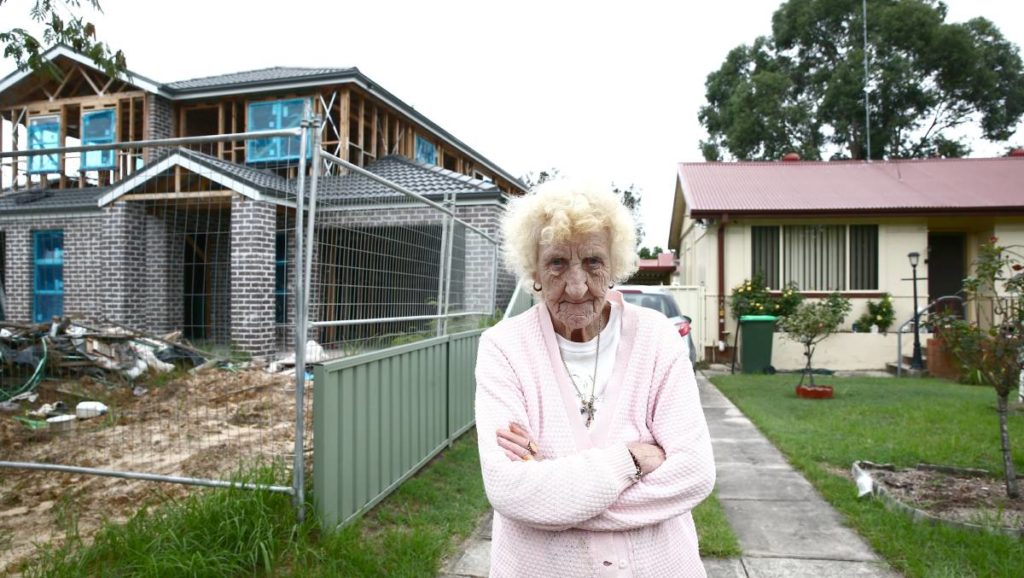
What would you think, if you lived on a pleasant suburban block, and your neighbour knocked down a modest 50's era home to build a duplex so big that it came up hard to the fenceline on both sides of the property, and parts of the building even overhung your fence?
This is the situation a local resident has faced in Teviot St, Richmond. I was concerned when I visited this site that a building of this scale was approved for a block this size. The brickwork is only about 8cm from the fence on both sides, and the gutters actually crossed the line of the property boundary.
How this kind of structure gets a tick is beyond me, and I think most readers would agree with me that this fails the common-sense test. I'm now going to take an interest in seeing if the rules Council follows for developments like this should be changed. If this building satisfied the criteria for such a development, then those codes need to change, badly!
Thankfully, the Gazette has picked up the story and my remarks on the matter can be found here.
Mrs McArthur, one of the affected neighbours, was not given any confidence when it was discovered that the private certifier has had several complaints upheld against him by the Building Professionals Board for not doing his job. At my urging, compliance action is now taking place by the Certifier and the builder, and I'll continue to take an interest.
If you have concerns about a matter like this in the Hawkesbury, please feel free to contact me.
The Health of Currency Creek
The health of our creeks and other waterways should be important to us all. The river and all its tributaries are jewels in the area's crown.
In our city, responsibility is shared between Hawkesbury City Council, various statutory bodies such as National Parks, the EPA and Sydney Water, and another body you may not have heard of, Hawkesbury River County Council. I was pleased to be elected in 2016 by my fellow Councillors to one of the two positions as delegate from Hawkesbury council to the County Council, which is a joint effort covering the LGA's of Hawkesbury, Penrith, Blacktown and the Hills Shire.
The County Council's responsibility is largely related to weed control in and near our waterways. Since coming on board, I've been impressed at the practical and professional approach shown by its leadership and workers. My perception is that it's a tight ship, and the people know and love their jobs.
Recently, a Hawkesbury resident approached me and expressed concern about the health of Currency Creek. The creek runs east from Tennyson, through Glossodia, Ebenezer and Sackville where it joins the river.
The picture was alarming:

Concern was also expressed on social media:
I took up the issue at our HRCC committee meeting last night.
I was informed that upper sections of the 15km length of Currency Creek are frequently reduced to a series of standing ponds. Sometimes 200 or 300m long, sometimes shallow and sometimes 6-8 feet deep. The green scum is Duckweed, and blooms of it can cause the underlying water to become anaerobic "black water".
Low flows in the upper reach of creeks are a natural consequence of rainfall patterns. It was not the opinion of HRCC staff that nutrient levels here are higher than normal because of identifiable agricultural runoff. The presence of dead fish (mostly Carp) arose from the combination of low oxygen and warm water. Carp like cool conditions. In weather like this, they "cooked".
In terms of what might be done, HRCC's mandate concerning weed control is limited to waterways traversing non-private land. Any waterway on freehold land is not subject to HRCC control. Spraying is not advised in this case because the subsequent biomass decomposition would exacerbate precisely the conditions causing the fish death. Many water plants such as Azolla (which, for example, my neighbour's dam is full of where I live in Oakville) fix Nitrogen directly from the air, and return nutrients to the environment on decomposition. In fact, this is a strategy actively used by the Chinese to fertilise rice paddies for centuries. The Duckweed is not something that can readily be reduced, either mechanically or chemically.
However, there's good news: This section of creek, although less than healthy now, is isolated and a single rainfall event will flush such blooms out. Here's a picture taken recently of the same creek only 5km further downstream.

Here, the water is clean and healthy, and shows the spectrum of biodiversity of a healthy creek. The whole creek isn't sick, just small sections. It's the height of Summer, and no creek flows freely at all times and places.
Concerned locals should also note that groundwater monitoring occurs continuously in the same are. The monitoring station pictured below is very close to the location of the concerned resident's video, and the health of our waterways are always under review.

In my new role at HRCC, I have been pleased to witness a new GPS-based logging and reporting system that has seen the number of property inspections for weeds rise through 2,500 per year and keep increasing. This requires a data sharing arrangement with member Councils and I have been supporting the dialogue required to make this happen. The HRCC makes good use of volunteer and vocational programs for its on-the-ground workers, and gains an increasing share of its income from commercial activities and government grants, placing a smaller burden on contributions from member councils.
If the concerned resident was worried that "no one cares" when he comes across the distressing scene of a sick waterway and posts video of it on Facebook, then I can assure him that the HRCC noticed, and discussed the matter at length within 48 hours of his post. The HRCC must operate within its' mandate, but if other environmental agencies need to be engaged, then they will be.
If you're a Hawkesbury resident and are concerned about the health of a waterway in your area, or about a noxious weed control matter that may fall within HRCC's remit, contact me and I'll forward your concerns.
-Clr. Zamprogno
St Joseph's Church, St Albans
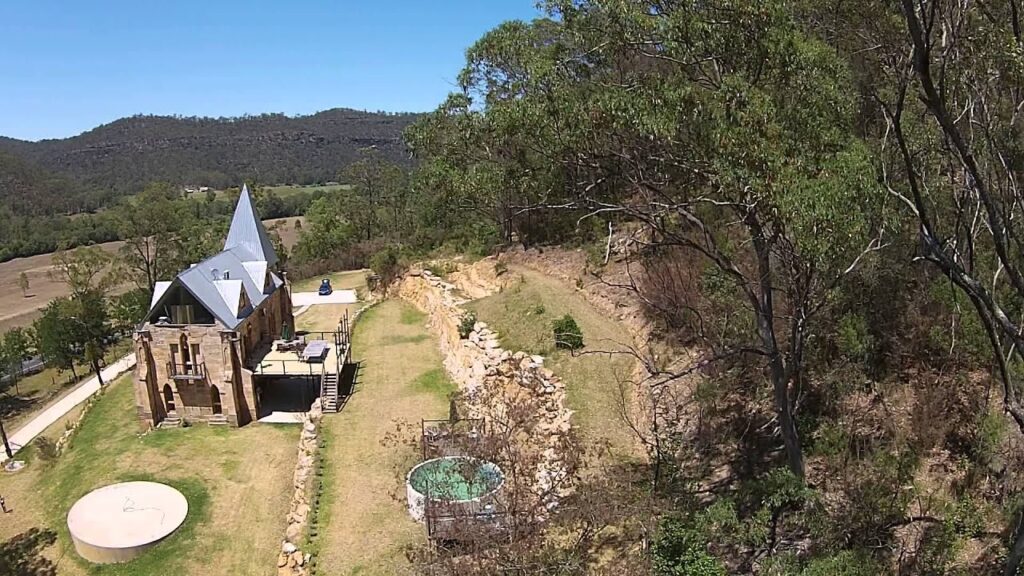
At Council last night we were presented with the application for the use of the restored St Joseph's church at St Albans as an accomodation and function venue. We had originally considered this application before Christmas but it was felt that a site visit would be useful for Councillors to be able to appreciate the merits (and concerns raised) over the application. I was pleased to visit the site recently.
Steve Kavanagh, the owner and restorer of this beautiful and historic building really should be commended for his passion, hard work and creativity. When he took on the building, it had been a roofless ruin since a fire in the 1840s. Mature trees had grown up through the original roofline amid the crumbling stone. When the church was founded (building commenced in 1839), it was the largest sandstone building outside Sydney.
Councillors were presented with the need to balance the proposed use of the site as an accomodation and function venue with the understandable desire of near neighbours to the peace and quiet which is distinctive of the Macdonald Valley. I listened carefully to the concerns raised at the meeting.
I felt that the conditions of consent proposed by Council adequately addressed those issues. Constraints on the days and hours of operation, which side of the building on which outdoor activities could occur, and the installation of noise-limiting technology that physically cuts the power if certain levels are exceeded certainly demonstrated, in my mind, a willingness of the applicants to be a good neighbour. Similarly, issues about campers and parking appear to have been addressed through appropriate signage and the use of a bond for bookers of the venue.
The recommendation of Council staff was to approve the application, and my Liberal Councillor colleagues, Clr. Richards and Clr. Conolly, agreed with me that this was precisely the kind of sympathetic tourist development we need in the Hawkesbury (Councillors Tree and Calvert were absent). Regretfully the Mayor, Mrs Lyons-Buckett, all the independent Councillors with the exception of Clr. Rasmussen, and Labor Councillor Kotlash voted the application down and the venue will be directed to shut down as a function venue from May 2017. I am informed that bookings had been accepted through until well into 2018, and that up to 20 local businesses will now be denied the aura of economic activity that the venue encouraged (including other accomodation venues, function planners, caterers, celebrants and providers of transport).
It's a bit rich, when we talk almost continually about tourism being the spine of our prosperity in the Hawkesbury, and especially in scenic areas like the Macdonald Valley, and we have a historic and beautifully restored venue like this appearing in the national media (the kind of exposure money can't buy) only to find some Councillors voting in this way. It's a poor outcome, and it defies my understanding.
Let's Celebrate Australia Day!

Happy Australia Day, everyone.
I am fiercely proud that on this day, we remember the pioneers, mostly British, who came from the other side of the world to a wondrous, yet challenging land. They built a prosperous and peaceable society from nothing, which is now the envy of the world. Could you?
This is the day to honour the spirit of a people who have an innate ability to punch above their weight. Who respect the idea of a fair go. Who cheer for the underdog.
Even though we're the best nation on Earth, we can laugh at ourselves, and we're happy to prick the egos of the self-important.
We are a people who will always come to the aid of a friend. We've laid it on the line to protect freedom and decency in the crucible of war, and we have paid with our dearest blood. We'll welcome you in with open arms if you work hard, respect our values, speak our language, and value your Aussieness over all other national, cultural or religious identities.
Our patriotism rarely descends to jingoism, but is grounded by our laconic good sense and an effective (and distinctly Aussie) BS-filter.
Here's a great thing about Australia: It doesn’t matter the colour of your skin, or your accent. We all came from somewhere. Some of us just came more recently than others. There are no “first Australians” and then the rest of us. There’s just…. All of us. Equal, without pretentiousness. If you pitch in, and respect the remarkable legacy of our young nation, then you’re a mate. Welcome!
This is our day. If you don't feel like you're a part of it, then it's only because you haven't accepted the invitation. This is not a day to wallow in recrimination, cast accusations, or judge our forebears by the different standards of today. No one is trying to exclude you, and no one says our nation, or any nation, is without faults. Just understand that this isn't what Australia Day is about. You’re welcome to join us-- We're looking forward, not back.
We're a youthful, peaceful, democratic, pluralist, secular, lawful, compassionate, innovative and good-humoured country. That's worth celebrating!
The forgotten history of Scheyville and Pitt Town
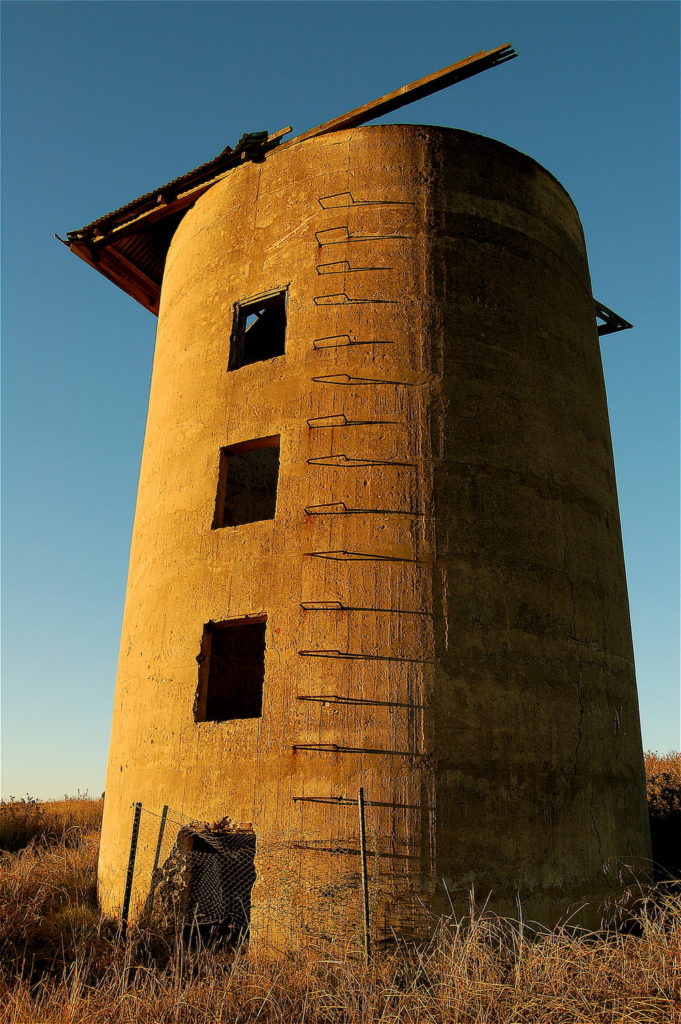
I value our wonderful history here in the Hawkesbury, and as a Councillor I want to do what I can to help other people get excited about it too. The late Dr Stubbs, when he was on Council was always a wonderful exponent of our history, and wrote extensively on many local topics, as well as being President of the Hawkesbury Historical Society. One subject that was very dear to him was the history of the Pitt Town, Scheyville and Oakville areas, since this is where he (and I) grew up.
Before Christmas, I had the opportunity of attending the graduating parade of the Cadet unit from 336SQN RAAF Richmond. They decided to hold the graduating parade on the parade grounds at the old base at Scheyville as a way of commemorating the military history of the precinct, and it inspired me to complete a project I began nearly a decade ago.
In 1983 Rex and Linda Stubbs completed a book on the history of the Scheyville area, which included key events from the history of Pitt Town as well. This excellent and concise work has been available in Windsor Library ever since, but has been inaccessible to students, historians and researchers using the Internet, being only available in hard-copy.
It has long been my desire to update, digitise and republish the Stubbs' work, and the school holiday break afforded to me as a teacher has granted me the time to complete this.
It is therefore with much pleasure that I republish electronically, for the first time, Rex and Linda Stubbs' "A History of Scheyville".
Click the above image for the PDF file.
I owe many thanks to Linda Stubbs for her gracious permission to permit this republishing, and to Kylie Lowe for her editing support.
The book contains several fascinating (and partly forgotten) stories about how the Hawkesbury shaped early Australia; stories which deserve to be more widely known.
Did you know that an early (and failed) experiment in Australian socialism occurred at Pitt Town? If the experiment had succeeded, would Australia have become a Socialist workers paradise?
Did you know about the time that the new Australian government almost literally beat swords into ploughshares by taking money put aside for a battleship and instead spent it on training young British lads to become Aussie farmers? It happened right here.
Did you know about the major military installation, now defunct, that trained young officers such as Jeff Kennett (former Victorian Premier) and Tim Fischer (former Australian Deputy Prime Minister)? Right here in the Hawkesbury.
Did you know that there is an entire ghost town nestled in one of our national parks, which in its day had its own cinema and school, and now abandoned?
If you can, get out to Scheyville National Park one afternoon and walk some of the well-signposted trails that tell the story of this jewel in the Hawkesbury.
Is the Hawkesbury a Shire or are we a City?
I still remember that when I was a kid in 1989, "Hawkesbury Shire Council" changed its name to "Hawkesbury City Council".
I wondered then, as I do now, why we bothered. It seemed a pointless gesture which worked actively against the identity most locals held about the area. I believe it sprang from an erroneous sense of inadequacy, and that we lost nothing by continuing to be known as a Shire.
Did you know the word Shire is a Saxon word, whereas County is its Norman equivalent? And a city, as our late Mayor Rex Stubbs used to explain to me, was a "town large enough to have its main church called a cathedral". Despite Rex's romantic penchant for referring to our historic St Matthew's church (this year celebrating its bicentenary!) as the "Cathedral of the Hawkesbury", I'm afraid I just don't buy it. We don't have to be a city. Let's look at some numbers.
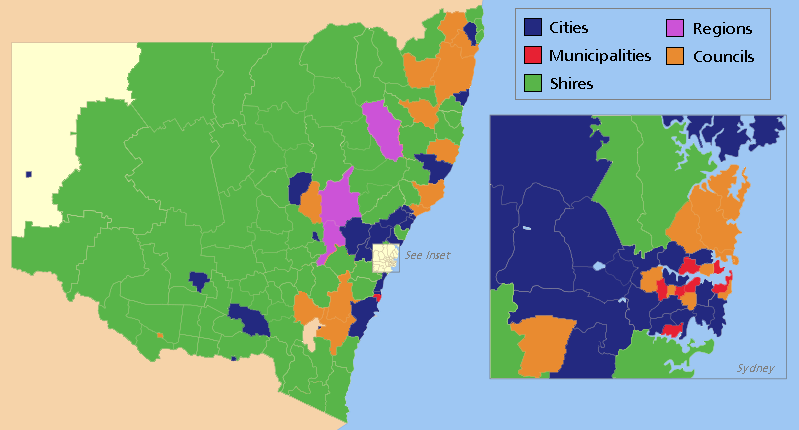
There are (subject to the ongoing vagaries of the Council amalgamation process), presently 128 Councils in NSW. The City of Hawkesbury has a population of 66,134 (per 2015 ABS Statistics). It's just a fact that plenty of Councils bigger than us are perfectly happy to continue to be known as "Shires", even when given recent opportunities to re-name. Look at Hornsby Shire (population: 156,847), Hills Shire Council (169,872), or Sutherland Shire (210,863). The latter is three times our size, and they feel no need to "upgrade". And no-one could accuse our near neighbour in The Hills Shire for being less dynamic or future-oriented. Further, their adherence to the word Shire is not an anachronism, considering they had the opportunity to re-brand themselves as a "city" when they changed from "Baulkham Hills Shire Council" (a name in use since 1906) to "The Hills Shire Council" in November 2008. And look at that area now!
I've always held the belief that the word "Shire" was more pleasant than "City", both for its ancient linguistic roots, but also its evocation of bucolic, open spaces.
The term Shire, in our case, used to reflect the fact that we were precisely not a bustling, congested, urbanised polis. We lay... between. We were between Sydney city proper and the country. The trendy term now in use is "peri-urban", but I find this to be a little pretentious. One could speculate that Tolkien would never have used such a Newspeak word when trying to evoke his sylvan idyll. The recent process I engaged in to draft our new Community Strategic Plan underlined that what we aspire to as our identity is largely defined by our semi-rural aspect. Our mix of habitation, agriculture, and protected environmental spaces is well described with the word "Shire". The word "City" just seems to convey the opposite to me, and, considering our population and neighbours who don't use the word, makes us look more than a little self-conscious.
Should the Hawkesbury remain as a City, or go back to our old name of "Hawkesbury Shire"? I think we should, even while I acknowledge that there is probably little appetite for the change. Further, there would be the cost of changing all our signage, letterheads and other livery -- and I would absolutely oppose that needless expense while we have more important matters to attend to as we pursue long term financial sustainability as a Council.
What do you think? I'm interested in knowing.
Here's a timeline of the naming of our municipality:

About NBN towers and the rollout of fixed wireless

We've all waited far too long for better Internet broadband in the Hawkesbury, especially for many of the rural and acreage properties in the district.
Frustratingly, there isn't much of the newer, faster NBN broadband outside the Richmond/Windsor area, excepting the northern fringe of the larger urban rollout that has petered out just at the southern edge of Oakville. I'm as frustrated as the rest of you -- faster broadband was promised to us years ago, and promised schedules only a year old were broken almost immediately.
NBNCO have been running community information sessions around the Hawkesbury as part of the process of the ongoing build process. I attended one of them recently at Pitt Town Sports Club, but others are being held for pending locations at Maraylya, Wilberforce, Cattai and elsewhere.
The most significant development announced was NBNCO's intention to roll out broadband via what they call "fixed wireless" rather than by the "fibre to the premises" (FTTP) method used to date. Fixed Wireless is supposed to be different in execution to the kind of cellular network you use for your mobile phones -- each tower will serve up to about 100 houses and each house will have a directional dish and a point-to-point link back to the local tower with a guaranteed amount of bandwidth (unlike your cellular mobile phone, where all bandwidth is shared). Unfortunately, fixed wireless at launch will give about half the bandwidth fibre would deliver (50Mbps down and 20Mbps up for fixed wireless, versus 100Mbps down and 40Mbps up for fibre), even though this is still far better than most people are getting now through their ADSL2 connections over Copper. For example, I measured the bandwidth of my ADSL2 connection at Oakville just now using Speedtest.net and got 2.58Mbps down and 0.75Mbps up. That's awful! -- worse than ADSL1, but I know that it's because I'm over 5km from the local exchange. Attenuation over copper is a fundamental limitation of ADSL, so there's nothing to be done about it.
NBN -- in any guise, is a huge step up.

So, it might seem that anyone who was originally promised fibre but is now being offered fixed wireless should feel unhappy. However, NBN officials promised that new-generation wireless technologies (such as 5G) will substantially boost the throughput within only a couple of years, and that customers about to get Fixed-Wireless NBN will be upgraded at that time.
Me? I'm agnostic about technology choices made NBNCO are making because the best new-era broadband for me is the one with the best chance of arriving this decade. I could hold out for something that will never arrive, or would cost me thousands of dollars to switch to. It's already overdue, let's get it done. I suspect most Hawkesbury residents feel the same way.
Anyway, these were the facts laid out at the information session. I was there in my role as a Councillor, but it's worth pointing out that Council has nothing to do with the technology choices NBNCO make, and very little to do with the process as a whole. Council acts as the consent authority for applications to install communication towers, but that's about it. The tower proposed to serve the Maraylya area, for instance, is in the Hills Shire Council area and Hawkesbury Council won't have anything to do with it.
I'm bothering to write about this because of something I learned that had nothing to do with Council. It was something I learned about human behaviour. I have noticed this before but it is newly relevant to me as a public representative.
I've worked in I.T for over 20 years, so I know a bit about technology. I studied Science method for my Masters degree in teaching, and regard myself as a Science nut. And frankly, most of the unhappy people at the (at times heated) community meeting I went to were ignorant of the scientific facts.
I saw a lot of people with genuine, but poorly founded fears about the impact of wireless technologies on their health. Even though they had lived alongside mobile phone towers for decades, they were convinced that these new NBN towers would irradiate them and give them cancer. One gentleman, on the wrong side of 60 or so it seemed, got up and proclaimed that he was worried about the effects of NBN radiation on the motility of his sperm. No, I'm not making this up.
As a politician, angry constituents made angry by something that's Not Their Fault™ are usually seen as grist for the mill, and are a prompt for soap-boxing, tub-thumping and general denunciation of the angriness-causing-thing.
However, on this occasion, I was surprised, and I felt a little embarrassed. These were people I knew personally; who were constituents in my neck of the woods. And they were, as I came to realise as I listened to them, mostly wrong about most of the things they were anxious about. In my opinion, the NBN representatives were saintly in their patience as they fielded the many questions they received, trying to convey scientific facts to a lay audience.
But, misguided fears are not insincere fears, and the people were entitled to answers about whatever they worried about, so let's unpack them.
Radio frequency radiation is regulated by Federal standards to protect public health. The chief body is ARPANSA, the Australian Radiation Protection and Nuclear Safety Agency. ARPANSA has a lot of documentation describing the general risks of RF radiation, and of the risks attendant on NBN wireless technology specifically. It would appear that most people at the meeting either didn't know about that, or specifically chose to be skeptical based on other non-authoritative research they may have done on line.
What troubled me about the tone of the meeting I attended was that some people's Googling was accepted as having as much merit as ARPANSA's authoritative role n determining absolute and relative risk as regards exposure to radiation. People are always free to hold their own opinions, but are not entitled to their own facts. This is an observation we can relate directly to the recent and inexplicable election of Donald Trump.
So let's be clear: The radio technology used in the NBN program is not harmful to human health. I'm convinced of that. If that's the basis of your objection to the NBN, then I'm afraid we just won't agree. No, Council aren't really involved anyway, but that's my view.
As a public representative, my job is to acknowledge the sincerity of concerns expressed to me, regardless of their foundation. I saw a lot of people sincerely worried about whether the move to wireless technologies to deliver the NBN was going to have a harmful health effect on them and their families. I listened carefully. However, rather than siding with them to gain political brownie points, I think it's more important to educate people and to work to dispel their fears with well-explained and factual information. Some people won't thank me for that, but it's the right thing to do. Beyond this, there are undoubted advantages to finally getting the NBN activated for the huge number of Hawkesbury residents living on acreage properties and for whom this can't come soon enough.
So, for what it's worth, I',m fully supportive of the NBN program and so long as wireless technologies eventually provide similar bandwidth as fibre (as we were promised it would), I have no objection to the mode of delivery.
-Councillor Zamprogno.
I love Trump, I hate Trump

November 13, 2016.
Today, I'm talking about Donald Trump. I'm sorry.
And who am I to add to the torrent of commentary that we've already endured on this subject? Especially when the bulk of that commentary, from pundits and pollsters who should have known better, was spectacularly wrong?
Perhaps they were missing something, and in the contemplation of that possibility, I am haunted by an adage:
"There is no cause so right that one cannot find a fool following it."
- Larry Niven.
A week ago, I expressed the view as a Conservative that it might be better if Trump lost the election. I saw... danger. That Trump did not reflect any Conservatism I could support. This has crystallised an emerging sense I've had about what motivates me in politics, and what I stand for. I want to counter those who are desperate to dictate what Trump's election to President does and does not mean for the future of Conservative politics.
Let's start with a useful definition I've leaned on over the years as a first approximation of a Conservative philosophy.
"Competence trumps Ideology".
Apart from the (coincidental) play on words, what I mean is that no amount of high-minded intent is worth a hill of beans without the ability to execute. That Conservatism is interested in what has proven the test of time. That Conservatism is wary of grand theories and radical change.
As a teacher, I offered this truism to my students as a starter for a classroom debate when musing on the question why democracies tend to devolve into binary blocs – two parties of the so-called Left and Right.
The Left, ever thinking with their heart ("Ice cream for everyone, and damn the expense!"), but rarely delivering. Prey to all the traditional follies of socialism, but now adding the corrosive influence of woke culture and its competitive virtue signalling. Poor with money and public administration.
Meanwhile the Right, who regard parsimony as a virtue. Who invariably have to clean up the mess the other mob leave behind when the political pendulum swings back, but rarely do the "vision" thing well. And now, further split between free-marketeers and social (and often religious) conservatives. And whose claim to the mantle of good economic management is only thought safe when resisting the urge to abandon fiscal prudence and keep to small government ideals.
Is this the best we can do?
This point was driven home recently when I read a recent speech by my friend and State MP Dominic Perrottet. He was speaking to the Menzies Research Centre where he called for Conservatives to better articulate their values.
Perrottet said:
"There is a loss of faith in public institutions, the political class and its programme. People feel displaced by rapid changes in the global economy. Establishment parties overseas are perceived as being on a unity ticket – of big government globalism, crony capitalism and minority fundamentalism. The frustrated centre is rejecting this elitist agenda and looking elsewhere for solutions – ending up in the arms of reactionary parties."
Now there is a man with his finger on the pulse, considering that he spoke before the result in America was known.
So, is the choice increasingly reduced to alternating between parties that make high-sounding promises but engender disillusionment when they never deliver, and parties that run a trim ship but are perceived as being heartless econocrats while battling their own religious fringe? Surely we can do better.

I think we can do better. And yet, here is the danger: I believe Trump represents the worst, the absolute worst of both worlds. Because Trump doesn't promise the "both" we're all looking for. He offers neither.
Donald Trump, and the dysfunctional party that backs him is an infuriating mix. Where Trump is right, on Islamic terrorism for example, or immigration, he will have little ability to execute (despite a majority in both houses), and will apply the wrong remedy anyway. He's dead right about the dislocation and disempowerment the working class feel as the result of Globalisation, but betrays his party's philosophical roots by becoming an economic protectionist, ignorant of the benefits of comparative advantage. Trump is like a doctor that diagnoses medical problems well, but whose prescription is obsolete, like leeches and Mercury. His solutions are dead wrong, even when his diagnosis is spot-on. And where he is wrong – such as on renewable energy, or universal health coverage, or nuclear proliferation, his powers will be limited to undoing the work of others rather than proposing any better fix. I predict an ongoing split within the Republicans and an attempt at impeachment within this Presidential term. It's a dreadful situation.
Rounding our the danger is Trump's sneering anti-intellectualism, which I find contemptible.
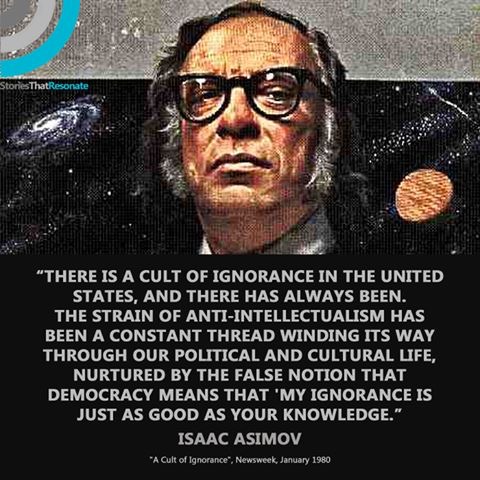
Only Trump could suggest a young earth creationist as Secretary for Education. Or a climate-change skeptic and oil magnate to be in charge of the environment. This proud know-nothingism lays at the core of the paradox that makes America simultaneously the smartest nation on earth and the dumbest at the same time.
I oppose Trump, even as a capital "C" Conservative because I can't throw my weight behind a person who barely respects rationality, let alone Science; Who sees conspiracy theories in every corner; Who shows no sign of thinking deeply on almost any subject; Who thinks, like Creon in Sophocles' Antigone, that his definition of loyalty to the state can be defined by his personal prejudices – and that to be outside that is treason.
And lastly, and no less important: because Trump acts as a poor role model because of his gross disrespect for women.
By any objective measure, Trump is a lightweight, vulgar con artist.
On the other hand, I feel conflicted because Trump has exploited a legitimate resentment, which I share, that has built over recent decades towards modern fads. Competitive virtue-signalling, political correctness, victim-fetishism, identity politics, polyculturalism masquerading as multiculturalism – these have all poisoned the well of our polity. The pushback has come from people who are sick of the moral superiority asserted by regressive leftists through their lecturing about "microaggressions", "deplatforming", "safe spaces", or their refusal to mount a muscular defence of Western civilisation in favour of appeasement towards Islamic fundamentalism. Look no further than the abuses of section 18C of the Racial Discrimination Act for proof that this problem extends to Australia.
Analogous, well held concerns about the downside of globalisation and the need for sovereign autonomy among nation states contributed to the UK voting for Brexit in June. (Parenthetically, Australia can only benefit from a renewed and independent Britain as a member of the club of English-speaking peoples of the Commonwealth.)
So on some of these broader questions, Trump is right. Yet still, I think he is absolutely the wrong standard-bearer for Western Civilisation. It's an invidious situation, and the world will become a more dangerous place while he remains President.
How did we get here? How did Americans, in an era where fact-checks are available on everyone's smartphones, elect a man who could deny in one breath what he had said in the previous one, and then stick his chin out when he was called a liar? Specifically, how do religiously conservative voters reconcile the cognitive dissonance of supporting a man with so few scruples? I recall the advice of my favourite author, Robert Heinlein:
“The America of my time line is a laboratory example of what can happen to democracies; and what has eventually happened to all perfect democracies throughout all histories. A perfect democracy, a ‘warm body’ democracy in which every adult may vote and all votes count equally, has no internal feedback for self-correction. It depends solely on the wisdom and self-restraint of citizens… which is opposed by the folly and lack of self-restraint of other citizens. What is supposed to happen in a democracy is that each sovereign citizen will always vote in the public interest for the safety and welfare of all. But what does happen is that he votes his own self-interest as he sees it… which for the majority translates as ‘Bread and Circuses.’
‘Bread and Circuses’ is the cancer of democracy, the fatal disease for which there is no cure. Democracy often works beautifully at first. But once a state extends the franchise to every warm body, be he producer or parasite, that day marks the beginning of the end of the state. For when the plebs discover that they can vote themselves bread and circuses without limit and that the productive members of the body politic cannot stop them, they will do so, until the state bleeds to death, or in its weakened condition the state succumbs to an invader—the barbarians enter Rome.”
I also recall my Spinoza:
"Faith requires not so much true dogmas as pious dogmas, that is, such as move the heart to obedience; and this is so even if many of those beliefs contain not a shadow of proof."
I lament that this election heralds an era where factual correctness, moral rectitude, or depth of insight are explicitly rejected as necessary for high office.
So what's the alternative?
What would a conservative leader who actually knew their history look like? Who was as likely to quote Scruton or A.C Grayling as Hayek or Von Mises in supporting their worldview? Who, if they had to seek a sense of the numinous, looked to the revelations of the Large Hadron Collider, the Hubble Telescope or a gene sequencer before they looked to a holy book? Carl Sagan said "Science, properly practiced, is a kind of informed worship". Why can't that be enough? Why can't we have a Conservative leader whose hero is Carl Sagan or Neil DeGrasse Tyson? Why should they "belong" to the Left? Science is cool!
What would a conservative leader look like who spoke unapologetically about Western Civilisation being objectively, measurably better that its alternatives? Who was able to demolish the intellectual impostures of cultural relativism and postmodernism, and who built and articulated an intelligent and publicly compelling case for the subsequent and necessary decisions on immigration, foreign policy and defence, instead of calling names and threatening political opponents with gaol?
A leader who, as John Howard says “Can win arguments, not just elections.”
What would a conservative leader look like who understood that we live in a society, not just an economy, and who admits that although free-markets consistently deliver greater wealth, some regulation and accountability are necessary to ensure that this wealth is not distributed unfairly? Who can admit that universal health-care is not socialism, but rather something that many countries have supported with bilateral zeal for half a century? That such boons are the patrimony of prosperous and humane societies?
What would a conservative leader look like who was prepared to address existential threats to civilisation such as overpopulation, climate change or resource depletion, but did so honestly? Who understood that our fundamental duty is to the generation after our own, more even than to our own? Who prioritises science funding, and space exploration? Who acknowledges our Judeo-Christian heritage at the same time as respecting the necessity of separation between church and state? Who was welcome to be a practicing Christian, but refused to wear it on their sleeve or ram it down your throat?
Whose attention span was longer than a tweet?
Maybe I'm asking too much. Maybe I'm asking for a conservative Jeb Bartlett. Maybe I'm fantasising that the nightmare will end when the Trump suit is unzipped, and a smiling Alan Alda steps out, miming finger guns to an appreciative crowd.
The left beat the pants off us in this regard. Again, returning to Perrottet's speech:
"[The left's] original aim of social justice, through helping the working class, has been left far behind. Today they cloak their politics in the sweet rhetoric of fairness, equality and tolerance – but their agenda is far from benign. They are motivated now by a burning hostility to our culture and heritage. It’s no coincidence they want to redesign our flag, rewrite our anthem, remove ANZAC Day, replace our constitution, repudiate our Judeo-Christian heritage, and rename our national day."
I agree that the militant left have precisely this agenda, and my gut feeling is that there is a hidden majority in the sensible centre of the Australian electorate who are as repelled by this agenda as I am. The electoral dividend residing in that distaste for social engineering is the Liberal Party's for the taking.
But I cannot see Trump as anyone's solution to these problems (and let me emphasise, this is no endorsement of Hillary Clinton).
Conservatism for me has nothing to do with "preserving marriage as sacred between a man and a woman". For pities sake... Let people live their lives. Aren't right of centre parties the parties of individual liberty? Of mitigating the State's influence in your personal lives? Grow up and stop pruriently caring about what happens in other people's bedrooms. It's none of your business. And don't say "think of the children". Kids with gay parents turn out just fine.
But Conservatism has everything to do with acknowledging the wisdom that our future comes from our past, and that there is value in a sense of continuity and connection with our heritage. That we respect the intent and work of our forebears, even while we innovate and update our sense of "what can be" for Western Civilisation. The Crown, the Constitution, and our inheritance from the Enlightenment are worth defending, because they have given us health, wealth and (relative) peace for over a century. That's something Australians should be more proud of than they are.
Conservatism should have little to do with blindly following free-market economics, but should seek to temper economic rationalism with a humane core. We should recognise the inherent value in some less tangible things and practices that provide enduring value – anchors to the way we want to live. Preserving the semi-rural lands in our city, and the viability of agriculture within the greater circle of the Sydney metropolitan area would be a good local example.
Conservatism should be about an absolute commitment to balancing our budgets and living within our means as the surest way of preserving intergenerational equity, but it shouldn't be about driving efficiency at any cost, because the electorate will spit you out. Witness the huge electoral damage of pushing unpopular Council amalgamations in NSW as proof. A huge, and easily avoided mistake.
Conservatism should be about preserving an absolute right to free speech, and being confident enough in the force of our arguments to never seek to censor. If your inclination is to say "I'm offended" when you are contradicted rather than offer a rebuttal, maybe you're just wrong and won't admit it. Censorship robs us all of our right to see bad ideas fail in a fair fight in the public square.
Lastly, Conservatism should be about governing for everybody, because when the pie is bigger, everyone gets a bigger slice. As Perrottet noted, a famous Australian politician once said:
“This country has great obligations to the weak,the sick, the unfortunate. It must give them all the sustenance and support it can…. to every good citizen the state owes not only a chance in life but a self respecting life”
The Hindu Temple at McGraths Hill
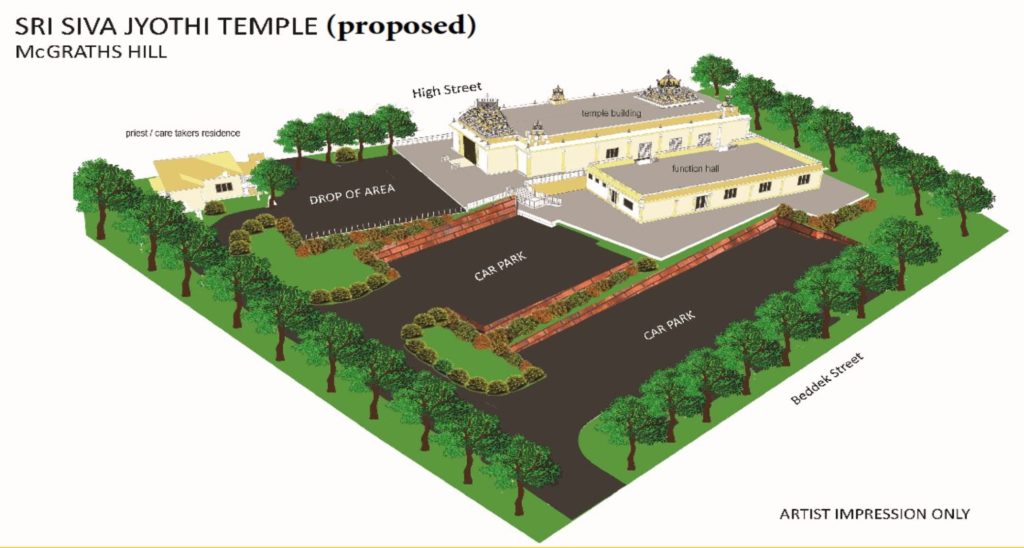
The proposal to build a Hindu temple in High street in McGraths Hill came before Council at the last meeting and was narrowly approved. The vote was tied six-all and was approved on the Mayor's casting vote. I spoke and voted against the proposal. The councillors who voted for and against the proposal are listed in the following table:
|
Voted for the Hindu temple |
Voted against the proposal |
| Councillor Barry Calvert (Labor) | Councillor Paul Rasmussen (Ind) |
| Councillor Patrick Conolly (Lib) | Councillor John Ross (Ind) |
| Councillor Amanda Kotlash (Labor) | Councillor Emma-Jane Garrow (Ind) |
| Councillor Lyons-Buckett (Ind) | Councillor Peter Reynolds (Ind/Labor) |
| Councillor Sarah Richards (Lib) | Councillor Danielle Wheeler (Greens) |
| Councillor Tiffany Tree (Lib) | Councillor Nathan Zamprogno (Lib) |
There is no doubt that this matter has been divisive, and I am aware of the strength of feeling that was expressed at the meeting from the gallery and on social media. However, my job was to examine the application before me and to consider it on its merits.
Tonight, I had the opportunity to attend a public meeting at McGraths Hill where the community expressed its frustration at the approval of a development with so many flaws. Only one other Councillor, Clr. Ross, was present.

I felt quite proud of the civility with which people spoke. These were ordinary people-- tradies, retirees and professionals, voicing well-thought-through concerns about their perception of deficiencies in leadership and of process at Council. Neither race nor religion were mentioned, nor was any bigotry manifested. The most common sentiment expressed was "great idea, wrong spot". Frankly, apart from a very small minority of noisy online ranters who were not even present at the meeting tonight, the stereotype of "objectors as racists" was completely disproven.
This post does not intend to prosecute the argument for or against the development, nor to reflect on my worthy colleagues who were entitled to vote as they chose. We differed in opinion-- and were entitled to. This is the process we engage in.
However, I will say that the purpose of this website is to communicate with the community. Each Councillor must account for the stance they have taken to their electorate, and I was glad to be able to stand among local residents and answer to them. A recording of my (brief) remarks are below:
Finding common ground on Windsor Bridge

There is no more controversial issue before the new council than the project to replace Windsor Bridge. It is an issue that has tested friendships, inflamed passions within the community, and created a protest movement that uses every trick in its playbook to prevent the project proceeding.
There will be much more to say on the matter of the bridge, and of the larger issues it augurs relating to the future of our district. I hold particular views on the subject, but this post makes no argument. Yet.
And why? Because there are seven new councillors on council, myself included. I feel that the first step, the step that must occur before a substantive debate about the bridge occurs, must be for the new council to be properly briefed by the relevant departments.
So, at the council meeting on Tuesday, I moved my first Notice Of Motion which called for a briefing to be given to us on the project. I asked that the briefing be held either in Thompson Square, or in Chambers (or both), and that relevant RMS, ministry and council staff be present. Councillor Richards and Councillor Reynolds had moved similar motions of a more limited scope, relating generally to support for an extra river crossing, and relating to an overall traffic strategy respectively. I am pleased that both of those councillors acknowledged that my own motion encompassed their concerns, and with their permission and certain amendments, they withdrew their motions and the following was put:
"That Council:
Support an additional crossing of the Hawkesbury River.
- A Councillor Briefing, incorporating presentations from relevant RMS and Council staff be held to provide details on the current status of the Windsor Bridge project.
- This Briefing should address project status, heritage, traffic performance, design and aesthetic issues (including open space) and maintenance responsibilities.
- A further Briefing be held for RMS and Transport for NSW officers to outline options and planning for future river crossings including commentary on the impacts of proceeding with the current Windsor Bridge replacement.
- That Briefing canvas the various options to give substantive effect to achieving the actions and funding of studies and investigations."
My background to the motion, furnished to assist my colleagues to understand why this was important, stated:
"The state of the Windsor Bridge replacement project is the most contentious issue before the new Council. The expectation of some is that Council should quickly resolve to reverse its former support for Option 1 and now formally oppose the project.
With seven new Councillors in the new term, there is clear merit in receiving a briefing on this issue before such a resolution comes before the Council, especially when it seems obvious there is sincere disagreement on some matters of fact.
To assist the General Manager identify which public officials should be invited to best achieve the briefing’s purpose, and to permit those officials to be adequately prepared, it is proposed the matters to be discussed could include (but not be limited to):
- The current state of the bridge replacement project (true cost and timeframe).
- How the project is identifying and conserving the heritage of Thompson square.
- The status of nearby heritage items, including number 10 Bridge St, the colonial era drainage works, the School of Arts steps, and the remnants of Greenway’s wharf.
- The evidentiary basis for predictions relating to improved traffic flow.
- The adequacy of the project to deal with projected traffic flows on a multi-decade horizon.
- The proposed aesthetic qualities, form, fabric, scale and position of the new bridge.
- How the project will manage the slope between the upper part of Thompson square park and the water.
- What ongoing input Council can have in ensuring the renewed precinct will suit the communities’ needs as regards amenity, aesthetic design (stone, ironwork, landscaping etc), tourism, mobility access, parking, historical interpretation and so on – which will be Council’s responsibility to manage after State-managed works are complete.
- What the options are for a longer term plan for future river crossings, such as the suggestion that an additional crossing form part of the feasibility investigations for the M9 orbital.
- What the cost of Option 8 from the 2011 RTA study would have been, which was for a downstream bridge near Pitt Town, and how it compares to the likely final cost of Option 1.
- Whether the time-frame or funding of such a future crossing is in any way affected by the completion or cancellation of the current bridge replacement project."
I am well aware that feelings run strong on this issue, and my expectation is that those councillors who oppose the project should and will ask many pointed questions when the briefing is held. I hope they do! Ultimately, eleven of the councillors voted in favour of my motion, which is pleasing.
The sole vote against the councillors receiving this briefing came from CAWB member, John Ross. I'll repeat that: On the very issue that elected Clr. Ross to Council, my worthy colleague voted against councillors even receiving a briefing, even after I had made it clear that it must be regarded as the first step towards a productive, rather than an angry and sterile, debate.
I will have much more to say on the subject of Windsor Bridge, but I will do so after this briefing has been given.
About the Redbank development at North Richmond

Last Tuesday was the first public meeting where we new councillors addressed regular council business. It went from 6:30pm until well after midnight, owing to the backlog of matters created by the election, and a helping of deferred matters gifted from the previous council.
I remarked at the meeting that this was a baptism of fire, as immediately before us was arguably one of the most contentious issues facing the new council: The Redbank development at North Richmond. The specific item before us on Tuesday were ten blocks in an area called "The Gallery" which back on to the RSL Retirement village. The retirement village residents objected that they had secured their houses in the belief that the land behind them would be left as empty space. They also objected on the grounds privacy, drainage and noise, given that the land slopes upward behind them and a retaining wall has been constructed.
The previous week I had inspected the site and, despite arriving unannounced, the site manager Scott was gracious in receiving me and showing me around. I also spoke to various residents living in the RSL village in Catalina Avenue, who showed me the promotional material the RSL offered them. It did indeed show a layout of the Redbank site with the land in dispute left open-- such as the image at the header of this post.
The recommendation from Council staff was to approve the subdivision -- or rather to ratify it, since we were told that the blocks had been sold and the new owners were waiting to build. I was informed that the original approval body of this part of the subdivision was not Council, but a State body called the JRPP (Joint Regional Planning Panel), who take planning decisions out of the hands of Councils if the value of a development is over $20 million.
Meantime, the deferral of this matter by the previous council was taken as a deemed refusal and the developers had commenced litigation in the Land and Environment Court. If the litigation proceeds, legal costs could be considerable to council.
I expressed my anger at the meeting that the JRPP did not take up the issue of why the development they were asked to approve in early 2014 was at such variance with the prospectus offered RSL village purchasers. The village residents have every right to be aggrieved that the material was misleading. My understanding is that the RSL have acknowledged this and have offered the residents the option to move and gain a refund. But surely this is cold comfort for many of those residents who have considerable sunk cost in their new homes and who probably regarded their last move of house as their last.
To determine who has perpetrated a deception on whom is not simple. I believe the testimony of the residents when they say that they were given an indication that the land would be open, both in terms of the brochure they showed me, and verbally. I disagree with the statement in the Council business paper which says
"Investigation from Council staff has not found evidence that sales person's advice had made this claim [that the land would be left open]"
However, on the other side, there are other factors which should be taken into account:
- The land was always zoned for potential subdivision, and the residents should have known that this was a permitted and likely use of that land when they bought adjacent to it.
- The residents bought-in after the Redbank development was approved (I'm awaiting definite dates here, but the developer says the JRPP approved it in early 2014 and the date one resident quoted me for their settlement was August 2014), and their solicitor could have found out the subject land was sub-dividable (but there is the legitimate riposte that they had received a verbal undertaking that the land would be free and did not think to check).
- The material which misled them was produced by RSL Lifecare, and the developers of the subject properties on Tuesday's D.A's are an unrelated party, and that recourse should be made by the RSL.
- That a complaint was made to Fair Trading about the deceptive promotional material, but that at this stage, the claim has not been upheld. I disagree, and would encourage the residents to pursue those avenues of appeal that Fair Trading indicated.
- That the developer's right to build on the lots approved by the JRPP is probably strong and a court case will be unlikely to negate it, but will be costly.
After balancing these concerns, I voted to approve the subdivision, but remarked that we metaphorically had a gun to our heads. I wasn't happy about it, but felt we had to do it. I didn't believe deferring or refusing it would alter the outcome, as regrettable as it is for the residents of Catalina avenue.
I am heartened, however, to hear that related issues concerning noise, drainage, and the screen planting between the fence and the retaining wall are all matters the developer is still happy to address with the residents as the matter comes to conciliation in the court.
The residents are entitled to think that the whole system has failed them. From their perspective, the RSL misled them and offered a remedy unpalatable to them. The JRPP should have been where the difference between the RSL prospectus and the developer's request were questioned, but weren't. The matter was dumped in the old Council's lap and then deferred to the new Council, who have again deferred it.
If the entirety of the Redbank decision had been mine to make years ago, I would have said no. However, that is a whole other question. On Tuesday, I was focused on the application before me, and nothing else.
As one of my worthy colleagues said during the meeting: "This is an example of how not to do things". I agree.
Removing barriers between Council and the public
One of the things I expressed my commitment to when I was seeking election to Council, is to improve the perception that Councillors are accountable to the public, interact easily with the public, and welcome public participation at Council meetings.
Immediately after the election, my worthy colleagues and I began a conversation about measures to implement this desire. It was commonly agreed that removing the boundary cordon between the seated Councillors and the public gallery would be a symbolic yet significant gesture, as would dispensing with the security guard, since in the recollection of our Councillors who had been on Council for 17 years, not a single incident requiring security action had ever occurred.
At the council meeting on Tuesday 11th October, a Mayoral minute to this effect was put forward, with myself as a co-sponsor.
Immediately as the proposal passed in the Chamber, I was one of the Councillors reported as rising to physically remove the barrier.
I am confident that in this Council term, visitors to our public gallery at Council meetings will interact positively with us, and that mutual respect will prevail.
Elected to Hawkesbury River County Council

At the Council meeting held on October 11, 2016 a preferential ballot was held to elect the Council's delegates to the Hawkesbury River County Council. I am pleased to say I was elected as one of Council's two delegates for the four year term.
The County Council operates effectively as a Council body in its own right, and its elected representatives are sent from the Councils in Hawkesbury, Blacktown, Penrith, and the Hills.
The Council's remit is largely concerned with weed management in the waterways of the Hawkesbury Nepean river and its tributaries. I am proud to be one of our community's representatives to this body.
Fitzgerald Aged Care branding launch

The "Photo-Op". Is there anything more clichéd and typical of the politician's photo album?
You get invited to the opening or commemoration of something in which you can take next to no credit, and you pose, mugging for the camera in the hope that your Mum (or better still, a voter) sees you in the paper/ social media afterwards. I suppose I should resign myself to this early. Sometimes, people are right to be cynical.
But perhaps there's something else going on here. Let's explore.
I attended my first outside function as a Councillor this week when I attended the launch of the revamped branding of the Fitzgerald Aged Care facility. I learned about their plans for ongoing improvements at their premises in Rum Corp Lane in Windsor. Despite having driven past the place all my life, I had never been there, tucked in there as it is behind the Sebel. I was unaware, for example, of the amazingly long history of the organisation out of which Fitzgerald had grown, dating back to the formation of the Hawkesbury Benevolent Society at a public meeting in 1818. This society had as its sole object "the support and relief by voluntary contributions of all real objects of charity in the Hawkesbury district" and "for the relief of such poor persons belonging to the district as through age, accident or infirmity (who) are unable to support themselves". It is pleasing to think that a body formed for that purpose two centuries ago is still discharging its duty!
If I had not been invited to that launch, I would not have been spurred to lose an evening diving into Trove and beginning a study of the storied history of the Society from which the present organisation descended. Fascinating.
As I attended the launch, I also heard from the residents, board members and staff of how the culture of Fitzgerald was distinctive for the commitment and kindness shown to its residents, and the friendliness and professionalism shown by the staff. I was particularly pleased to make the re-acquaintance of the Board President Dr Jules Whitty, whom I knew in his days as a surgeon, as he reminded me that as an independent facility, the challenge to remain modern and well resourced was constant. My new colleague on Council, Clr. Sarah Richards has also been a member of the board on and off for some years and her pride in the work of Fitzgerald was plain.
So there's a better reason why a newbie politician like me should go to photo ops like these. It's not about me. It's about giving some recognition to people and organisations who plug away doing worthy things with less thanks than they deserve. Did you know about this hidden gem in our local community? I didn't, and now I have a better appreciation for it, and for the staff and board who work so tirelessly for its betterment. Worth standing there for a photo.


